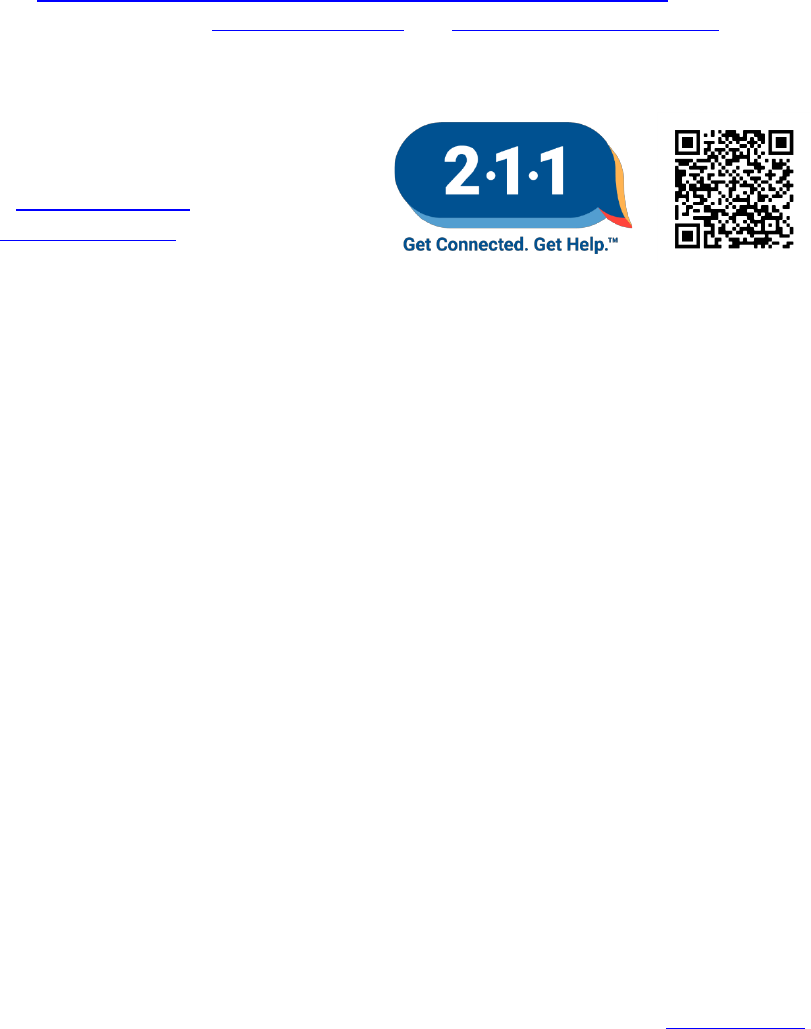
Page 1 of 47 RETURN TO MENU
version 01/19/2022
Coronavirus Disease 2019 (COVID-19)
Frequently Asked Questions
Revised January 19, 2022
NOTE: These questions are for general information about COVID-19.
For vaccine-related questions, please see our COVID-19 vaccine FAQs at
health.hawaii.gov/prepare/files/2020/12/DOH_COVID-19_FAQs_VACCINES.pdf.
This document provides reliable and up-to-date information to the general public during the continuing
COVID-19 global pandemic. Key messages are the importance of maintaining preventive measures while
we quickly try to vaccinate as many people as possible. Main preventive measures include the following:
• Getting fully updated with your vaccinations by completing your primary vaccination doses, as
well as the booster
• practicing social distancing during the COVID-19 pandemic
• wearing cloth face coverings (“masks”) when out in public (particularly indoors or in large
groups outdoors)
• frequent hand-washing
• avoiding touching your face with dirty hands
• staying home when you are sick
o Do not go to work, school, and other activities if you are feeling ill.
Symptoms of COVID-19 include fever, cough, and shortness of breath or trouble breathing, as well as
chills, muscle pain, sore throat, new loss of taste or smell, and others.
MENU
Acronyms and abbreviations used in this document:
• 2019-nCoV: 2019 Novel Coronavirus
• CDC: US Centers for Disease Control & Prevention
• COVID-19: Coronavirus Disease 2019
• FDA: US Food & Drug Administration
• HI-EMA: Hawaii Emergency Management Agency
• HDOH: State of Hawaii Department of Health
• MERS: Middle East Respiratory Syndrome
• SARS: Severe Acute Respiratory Syndrome
• SARS-CoV-2: Severe Acute Respiratory Syndrome Coronavirus 2
• UHM: University of Hawai‘i at Mānoa
• WHO: World Health Organization

Page 2 of 47 RETURN TO MENU
version 01/19/2022
OVERVIEW
1. What is COVID-19?
2. What are “variants” of COVID-19?
3. What is the Delta variant? What do I need to know?
4. What is the Omicron variant? What do I need to know?
5. What are “breakthrough” cases?
6. How does COVID-19 spread?
7. Can someone spread COVID-19 if they have no symptoms?
SYMPTOMS AND TREATMENT
8. What are the symptoms of COVID-19?
9. Are there emergency signs of COVID-19? What should I do if I have them?
10. How long does it take for symptoms to appear?
11. Are there complications from COVID-19?
12. Should I be tested for COVID-19 infection?
13. Is free testing for COVID-19 available in Hawaii?
14. If I test negative, does that mean I cannot get COVID-19?
15. Why is an “official” test result positive even though the test I took at home or
elsewhere was negative?
16. What is a “close contact”?
17. Who is at greatest risk for severe illness from COVID-19?
18. What other conditions can make you vulnerable for severe illness from COVID-19?
19. Are children affected by COVID-19 in any unique way?
20. Are some ethnicities more likely to get coronavirus than others?
21. What is the test for SARS-CoV-2 or COVID-19? Can any laboratory in Hawaii test for it?
22. What is an antibody test?
23. I took a serological (blood) test that says I have antibodies for the virus that causes
COVID-19. Does that mean I can stop quarantining or social distancing?
24. How is COVID-19 treated?
25. Is it safe to try medications intended for other purposes?
26. How long is a person with COVID-19 infection contagious? When can they be around
others?
SITUATION IN HAWAII AND THE UNITED STATES
27. How many cases of COVID-19 have there been in Hawaii? How many deaths?
28. Am I at risk for COVID-19 in the United States?
29. Is COVID-19 a danger in Hawaii?

Page 3 of 47 RETURN TO MENU
version 01/19/2022
30. What would happen if widespread person-to-person transmission continues in Hawaii
or elsewhere in the United States? What is the reason we are trying hard to prevent
this?
31. Does HDOH tell us where there is a confirmed case in Hawaii and where the case is
located?
32. Does HDOH release the names of confirmed cases, deaths, or persons under
investigation?
33. What are the differences between “isolation” and “quarantine”?
34. What is the guidance for home isolation and quarantine?
35. If I have been vaccinated, do I still have to quarantine or isolate if I am exposed to
someone with suspected or confirmed COVID-19?
36. If I have recently recovered from COVID-19, do I still have to quarantine or isolate if I
am exposed to someone with suspected or confirmed COVID-19?
37. Are the State of Hawaii and county governments mandating “vaccine passports” or
requiring people to be vaccinated? Is vaccination required for any kind of activity?
38. Can I get a “clearance letter” after my isolation or quarantine is over?
39. If I am working with COVID-19 patients or I know of someone who has COVID-19,
what can I do to protect and help reduce stigma for that person?
40. When there are cases in Hawaii, how are they isolated? What are the procedures and
protocols?
41. What is self-monitoring?
42. What is HDOH doing to monitor the situation with COVID-19?
43. What are hospitals in Hawaii doing about COVID-19?
PREVENTION AND PROTECTION
44. What measures are being done to prevent widespread transmission?
45. Is there a lockdown on Oahu because of high numbers of cases?
46. What are the restrictions on islands other than Oahu?
47. What kind of alcohol is safe to have in hand sanitizer?
48. Are there other safety concerns for alcohol-based hand sanitizers?
49. Should I delay other medical care due to COVID-19? How can I safely get medical care?
50. I am currently pregnant. What should I be aware of regarding COVID-19?
51. I have COVID-19. Can I breastfeed my baby?
52. Is there a vaccine for SARS-CoV-2 / COVID-19?
53. Does the flu shot provide any protection against COVID-19?
54. Why should I get the flu shot then?
55. Will wearing a mask protect me from COVID-19? Why should I wear a mask?
56. Am I required to wear a mask despite CDC’s announcement that fully vaccinated
people no longer need to wear masks or practice social distancing?
57. What other things should I know about wearing a cloth face covering (“mask”)?
58. What is an N95 respirator? How is it different from a surgical mask?
59. Is it necessary to wear two masks?

Page 4 of 47 RETURN TO MENU
version 01/19/2022
60. What can I do to protect my mental and emotional health, or that of my family
members, during the COVID-19 outbreak?
61. What can I do to protect my child’s mental and emotional health during the COVID-19
outbreak?
VACCINE-RELATED QUESTIONS
For vaccine-related questions, please see our COVID-19 vaccine FAQs at
health.hawaii.gov/prepare/files/2020/12/DOH_COVID-19_FAQs_VACCINES.pdf
TRAVEL-RELATED QUESTIONS
62. Is it safe to travel within the United States during the COVID-19 outbreak?
63. Can I travel during the holidays? Can I have family gatherings as usual?
64. Is it safe to travel internationally?
65. Is Hawaii quarantining travelers to our state arriving from elsewhere in the US?
66. Is Hawaii quarantining travelers to our state who are arriving from international
locations?
67. Is Hawaii quarantining travelers between our islands?
68. Who has to use the Safe Travels online digital form for interisland travel and how do
they do it? Is it mandatory?
69. Are there exceptions or alternatives to the 10-day quarantine for travelers to Hawaii?
70. What are the criteria for the pre-travel testing program?
71. Are any follow-up tests required besides the pre-travel negative test?
72. Who are the “trusted testing and travel partners” on the United States mainland?
73. Who are the “trusted testing and travel partners” in Japan?
74. Who are the “trusted testing and travel partners” in Canada?
75. Who are the “trusted testing and travel partners” in the Philippines?
76. Who are the “trusted testing and travel partners” in Tahiti?
77. Who are the “trusted testing and travel partners” in South Korea?
78. Who are the “trusted testing and travel partners” in Taiwan?
79. Who are the “trusted testing and travel partners” for inter-island travel?
80. What do travelers who have been vaccinated in Hawaii need to do in order to
receive a vaccine exemption?
81. What guidance is there for the schools so that students and teachers will be
protected?
82. Are there special conditions for students attending university campuses across the
state, such as UHM, Chaminade University, and Hawaii Pacific University?
OTHER QUESTIONS
83. Should I be worried about products imported from China?
84. What about animal products from China?
85. Is my pet at risk of getting COVID-19? Do animals in Hawaii have COVID-19?

Page 5 of 47 RETURN TO MENU
version 01/19/2022
86. If I think I or my family member has contracted COVID-19 but we have no health
insurance due to a lost job or other situation, what should we do? Will we be turned
away from a hospital?
87. What is the correct name of this outbreak’s disease and the virus that causes it?
88. What are coronaviruses?
89. Where can I find out more information?
OVERVIEW
What is COVID-19?
COVID-19 is a novel (new) respiratory virus that was first identified in the central Chinese city of
Wuhan, in Hubei Province, in December 2019. It has since spread across China and around the
world. On January 30, 2020, the WHO declared a Public Health Emergency of International
Concern and on March 11, 2020, declared a pandemic (global outbreak of a disease). The most
updated numbers can be found at the HDOH website: health.hawaii.gov/covid19.
HDOH is urging all residents to help prevent the spread of COVID-19 in our communities. You
can learn what to do by visiting the HDOH website at:
health.hawaii.gov/coronavirusdisease2019/what-you-can-do/how-to-prevent-the-spread-of-
covid-19.
What are “variants” of COVID-19?
As with many other contagious diseases, the coronavirus that causes COVID-19 can change over
time due to gene mutations that occur when the virus reproduces and spreads to other people.
There are multiple variants of the virus that causes COVID-19 and more are expected to occur.
Some variants may spread more easily or be more resistant to treatments and vaccines.
CDC, WHO, and other public health organizations are constantly monitoring COVID-19 cases for
new variants so we can be prepared. You can learn more about COVID-19 variants by visiting
this CDC website: www.cdc.gov/coronavirus/2019-ncov/variants/variant.html.
What is the Delta variant? What do I need to know?
The Delta variant spreads more quickly and easily than earlier strains of the coronaviruses and
can cause more serious illness and death. The symptoms of the Delta variant are the same as
earlier versions of COVID-19.
This is what you should know about the Delta variant:
• The Delta variant is highly contagious, more than 2x as contagious as previous variants.
• Some data suggest the Delta variant might cause more severe illness than previous
variants in unvaccinated people. In two different studies from Canada and Scotland,
patients infected with the Delta variant were more likely to be hospitalized than

Page 6 of 47 RETURN TO MENU
version 01/19/2022
patients infected with Alpha or the original virus that causes COVID-19. Even so, the vast
majority of hospitalization and death caused by COVID-19 are in unvaccinated people.
• Unvaccinated people remain the greatest concern: The greatest risk of transmission is
among unvaccinated people who are much more likely to get infected, and therefore
transmit the virus. Those who are up to date with their vaccinations get COVID-19
(known as breakthrough infections) less often than unvaccinated people. People
infected with the Delta variant, including fully vaccinated people with symptomatic
breakthrough infections, can transmit the virus to others. CDC is continuing to assess
data on whether fully vaccinated people with asymptomatic breakthrough infections
can transmit the virus.
• Fully vaccinated people with Delta variant breakthrough infections can spread the
virus to others. However, vaccinated people appear to spread the virus for a shorter
time: For prior variants, lower amounts of viral genetic material were found in samples
taken from fully vaccinated people who had breakthrough infections than from
unvaccinated people with COVID-19. For people infected with the Delta variant, similar
amounts of viral genetic material have been found among both unvaccinated and fully
vaccinated people. However, like prior variants, the amount of viral genetic material
may go down faster in people who are up to date with their COVID vaccinations when
compared to unvaccinated people. This means those who are up to date with their
COVID vaccinations will likely spread the virus for less time than unvaccinated people.
You can learn more about the Delta variant by visiting this CDC website:
www.cdc.gov/coronavirus/2019-ncov/variants/delta-variant.html.
What is the Omicron variant? What do I need to know?
Right now, CDC, WHO, and public health experts are particularly concerned about the Omicron
variant, which has more genetic mutations than previous variants (including Delta) and may
spread more quickly than earlier strains of the coronavirus, even among those who are up to
date with their vaccinations. The Omicron variant has already been identified in most states
and territories, including Hawaii.
It is not yet known if Omicron can cause more serious illness and death, and researchers are
investigating this carefully.
The symptoms of the Omicron variant are the same as earlier versions of COVID-19. We do
know that being up to date with COVID-19 vaccinations are the best ways to protect against the
Omicron variant.
This is what you should know about the Omicron variant:
• Getting vaccinated (and, if appropriate, getting a vaccine booster) is the best
protection against Omicron and other known variants:

Page 7 of 47 RETURN TO MENU
version 01/19/2022
o The COVID-19 vaccines authorized by the FDA protect against Omicron and other
known variants.
o People who are up to date with their vaccinations are much less likely to get
infected, get very sick, or die from COVID-19, compared to people who are not
vaccinated.
o People who are up to date with their vaccinations are less likely to spread
COVID-19.
o People who are eligible (i.e., six months have passed since they received the
Pfizer or Moderna vaccines, or two months have passed since they received the
Johnson & Johnson vaccine) should get a booster shot to maximize their
protection against the Omicron variant.
• Unvaccinated people appear to be more at risk of getting seriously ill or dying from
the Omicron variant than earlier forms of COVID-19.
• Because the Omicron variant spreads more easily and quickly, and because those who
are up to date with their vaccinations may also transmit it, everyone (including fully
vaccinated people) should continue wearing masks in public indoor spaces and
crowded outdoor settings.
You can learn more about the Omicron variant by visiting this CDC website:
www.cdc.gov/coronavirus/2019-ncov/variants/omicron-variant.html
What are “breakthrough” cases?
COVID-19 vaccines are effective at preventing infection, serious illness, and death. Most people
who get COVID-19 are unvaccinated. However, since vaccines are not 100% effective at
preventing infection, some people who are up to date with their vaccinations will still get
COVID-19.
An infection of a fully vaccinated person is referred to as a “vaccine breakthrough infection.”
• Vaccine breakthrough infections are expected. COVID-19 vaccines are effective at
preventing most infections. However, like other vaccines, they are not 100% effective.
• Fully vaccinated people with a vaccine breakthrough infection are less likely to develop
serious illness than those who are unvaccinated and get COVID-19.
• Even when fully vaccinated people develop symptoms, they tend to be less severe
symptoms than in unvaccinated people. This means they are much less likely to be
hospitalized or die than people who are not vaccinated.
• People who get vaccine breakthrough infections can be contagious.
You can learn more about breakthrough cases by visiting this CDC website:
www.cdc.gov/coronavirus/2019-ncov/vaccines/effectiveness/why-measure-
effectiveness/breakthrough-cases.html.

Page 8 of 47 RETURN TO MENU
version 01/19/2022
How does COVID-19 spread?
Although we have uncovered a lot about COVID-19, we are still learning how the virus spreads.
Although SARS-CoV-2 (the virus that causes COVID-19) likely came from an animal source, it is
now primarily spread from person-to-person. Some viruses are very contagious (like measles),
while other viruses are less so. This virus spreads very easily and sustainably between people.
Like most coronaviruses (including the common cold), the virus causing COVID-19 spreads
mainly through the tiny droplets produced when an infected person coughs or sneezes. These
droplets can land in the mouths or noses of people who are nearby and possibly be inhaled into
the lungs. People infected with the virus causing COVID-19 can also spread the virus, even if
they do not have symptoms of COVID-19, which makes this virus especially difficult to stop.
At this time, our best research shows that COVID-19 is spread in the following ways:
• The virus causing COVID-19 spreads more efficiently than influenza, but not as
efficiently as measles, which is highly contagious. The Delta variant spreads much more
easily and quickly than earlier versions of COVID-19.
• It spreads most easily between people who are in close contact with one another
(within about 6 feet), especially indoors but even in crowded outdoor settings.
• The virus travels through respiratory droplets produced, especially when an infected
person coughs or sneezes, but possibly also when they talk, yell, or sing.
• These droplets can land in the mouth, nose, or eyes of someone nearby or possibly
inhaled into the lungs.
• COVID-19 may spread like this even if the infected person is not showing symptoms
(“asymptomatic”) and does not know they are infected.
• There is evidence that a person can get COVID-19 by touching a surface or object that
has the virus on it and then touching their own mouth, nose, or eyes; however, this is
not thought to be a main way the virus spreads.
• Mother-to-child transmission during pregnancy seems to be rare, but after birth a
newborn is susceptible to person-to-person spread through respiratory droplets. (Please
see I am currently pregnant and Can I breastfeed my baby? in a later section to see
how pregnant and breastfeeding mothers can protect their child.)
• At this time there is no evidence that the virus spreads through food. The risk of getting
COVID-19 from food you cook yourself or from handling and consuming food from
restaurants and takeout or drive-thru meals is thought to be very low.
You can learn more about how COVID-19 spreads at the following website:
www.cdc.gov/coronavirus/2019-ncov/prevent-getting-sick/how-covid-spreads.html.
Can someone spread COVID-19 if they have no symptoms?
Although the virus is usually spread from infected people who have symptoms of COVID-19
(“symptomatic”), we now know that people infected with the virus who have no symptoms

Page 9 of 47 RETURN TO MENU
version 01/19/2022
(“asymptomatic”) or who are not yet showing symptoms (“pre-symptomatic”) can also spread
the virus to other people.
This is why it is important for people to wear face coverings in public or in close proximity to
other people even if they think they are not infected. People who are up to date with their
COVID vaccinations should also continue wearing face coverings indoors in public places and in
crowded places outdoors.
SYMPTOMS AND TREATMENT
What are the symptoms of COVID-19?
Patients with COVID-19 generally report mild symptoms to severe illness, usually 2 to 14 days
after exposure. If you have these symptoms, contact your healthcare provider:
• Fever or chills
• Cough
• Shortness of breath or trouble breathing
• Muscle or body aches
• Fatigue
• Headache
• New loss of taste or smell
• Sore throat
• Congestion or runny nose
• Nausea or vomiting
• Diarrhea
Some patients may not report fever, especially the very young, elderly, immunosuppressed,
and people taking certain fever-lowering medications. Most people have mild illness and are
able to recover at home.
The above list does not include all possible symptoms. This list will be updated as CDC and
other researchers learn more.
Are there emergency signs of COVID-19? What should I do if I have them?
People who have COVID-19 or think they have COVID-19 should watch for emergency warning
signs and seek emergency medical care immediately, by calling 911 or calling ahead to their
local emergency facility (and notifying the operator that they are seeking care for someone who
has or may have COVID-19). These emergency warning signs include the following:
• Trouble breathing
• Persistent pain or pressure in the chest
• New confusion
• Inability to wake or stay awake
• Bluish lips or face

Page 10 of 47 RETURN TO MENU
version 01/19/2022
How long does it take for symptoms to appear?
CDC believes the symptoms of COVID-19 may appear as early as 2 days after exposure and as
long as 14 days after exposure.
Are there complications from COVID-19?
Many patients with COVID-19 develop pneumonia in both lungs. In a small percentage of cases,
death occurs.
Some people have developed long-term health conditions even after their COVID-19 infection
has cleared. These include long-lasting conditions known as “long COVID,” as well as Multiple
Inflammatory Syndrome (MIS). You can learn more about them at the following CDC websites:
• “Long COVID”: www.cdc.gov/coronavirus/2019-ncov/long-term-effects.html
• MIS: www.cdc.gov/mis/about.html
Should I be tested for COVID-19 infection?
You should call ahead to a healthcare provider to find out about getting tested for COVID-19
infection if one of the following is true:
• If you have COVID-19 symptoms
• After known or suspected exposure to COVID-19
• For screening (schools, workplaces, congregate settings, etc.)
• Before travel
• When asked by a healthcare professional or public health official
People at higher risk for severe disease (older people, those with chronic medical conditions
and immunosuppression) should also be prioritized for testing. They should contact a
healthcare provider who can help determine whether they should be tested for COVID-19.
You can use the CDC’s “Viral Testing Tool” to see if you should get tested:
www.cdc.gov/coronavirus/2019-ncov/testing/diagnostic-testing.html#who-should-get-tested.
You can also check out the CDC’s “Coronavirus Self-Checker” to see if you should contact a
healthcare provider: www.cdc.gov/coronavirus/2019-ncov/symptoms-testing/symptoms.html.
People who have tested positive for COVID-19 but have recovered from their symptoms may
continue to test positive for three months or more without being able to spread the virus to
others. These people should get tested again only if they develop new symptoms of COVID-19.
They should speak with their healthcare provider about getting tested if they have been in close
contact with someone who has COVID-19 in the last 14 days.
You can read more about testing here: https://www.cdc.gov/coronavirus/2019-
ncov/symptoms-testing/testing.html

Page 11 of 47 RETURN TO MENU
version 01/19/2022
Is free testing for COVID-19 available in Hawaii?
Yes. HDOH maintains a website that contains information on where to obtain a COVID-19 test,
including locations that offer free testing. You can find the information at
hawaiicovid19.com/testing-isolation-quarantine.
If I test negative, does that mean I cannot get COVID-19?
No. A negative test means you probably were not infected at the time your sample was
collected, or that your sample was collected too early in your infection. You could also be
exposed to COVID-19 before the test, but the infection may be too low to detect at the
time the test was performed. If you have symptoms later, you may need another test to
determine if you are infected with COVID-19.
A negative viral test does not mean you cannot get infected or get sick later.
Why is an “official” test result positive even though the test I took at home or elsewhere was
negative?
Some tests are more sensitive than others and may detect a COVID-19 case that a less sensitive
test missed. For example, the PerkinElmer New Coronavirus Nucleic Acid Detection Kit, used by
Operation Expanded Testing, detects as low as 180 NDU/mL (NAAT detectable units per
milliliter), while the test from Quest does not detect lower than 1,800 NDU/mL.
What is a “close contact”?
A close contact is someone who meets one of the following descriptions:
• They have been within 6 feet of a COVID-19-infected person for 15 minutes or longer.
• They have been directly in contact with a COVID-19-infected person’s secretions (e.g.,
they were coughed on).
Who is at greatest risk for severe illness from COVID-19?
Those at higher risk include older adults and anyone with underlying health conditions,
although people of all ages and healthy people are also at risk.
Those in the following groups are most vulnerable to severe illness from COVID-19:
• Older adults
o Risk goes up with age, although all ages have some risk.
o The greatest risk for severe illness is among those aged 85 and older.
• People of any age with these conditions:
o Cancer
o Chronic kidney disease
o COPD (chronic obstructive pulmonary disease)
o Weakened immune system (immunocompromised) from organ transplant
o Obesity (body mass index [BMI] of 30 or higher)
o Serious heart conditions (e.g., heart failure, coronary artery disease, or
cardiomyopathies)

Page 12 of 47 RETURN TO MENU
version 01/19/2022
o Sickle cell disease
o Type-2 diabetes mellitus (formerly known as adult-onset diabetes)
• People with frequent institutional or organizational exposure to people with COVID-19
What other conditions can make you vulnerable for severe illness from COVID-19?
Other conditions may put people at increased risk for severe illness from COVID-19, including
children. These include the following:
• Asthma (moderate to severe)
• Cerebrovascular disease (affecting blood vessels and blood supply to the brain)
• Hypertension or high blood pressure
• Weakened immune system (immunocompromised) from blood or bone marrow
transplant, immune deficiencies, HIV, use of corticosteroids, or use of other immune
weakening medicines
• Neurologic conditions such as dementia
• Liver disease
• Pregnancy
• Pulmonary fibrosis (having damaged or scarred lung tissues)
• Smoking
• Vaping
• Thalassemia
• Type-1 diabetes mellitus
• Social determinants of health
o Crowded housing, poor access to quality healthcare, lower income,
incarceration, resident of long-term care facility, certain occupations
People with underlying medical conditions are advised to keep their healthcare appointments,
practice preventive measures (e.g., social distancing, frequent hand-washing, wearing face
coverings, etc.), and make sure to have at least a 30-day supply of prescription and non-
prescription medicines.
Are children affected by COVID-19 in any unique way?
Although children are generally at much lower risk than older adults, there have been over
4,000 cases of a rare but serious condition associated with children and adolescents called
Multisystem Inflammatory Syndrome in Children (MIS-C). It can begin weeks after a child or
adolescent is infected with the virus causing COVID-19, even in those who had not shown
symptoms of COVID-19. As of August 27, 2021, forty-one deaths are considered likely due to
MIS-C.
MIS-C has been described as inflammation across multiple body systems, potentially including
the heart, lungs, kidneys, brain, skin, eyes, and gastrointestinal organs. Symptoms can include
abdominal pain, vomiting, diarrhea, neck pain, rash, conjunctivitis, and fatigue.

Page 13 of 47 RETURN TO MENU
version 01/19/2022
You can learn more about MIS-C at the following CDC page: www.cdc.gov/mis-c/cases.
Are some ethnicities more likely to get coronavirus than others?
No, viruses cannot target people from specific populations, ethnicities, or racial backgrounds.
People who have not been in contact with a person who is a confirmed or suspected case are
not at greater risk of acquiring and spreading this new virus than others. In particular, people of
Chinese or other East Asian descent are not more likely to get or spread the coronavirus.
There is increasing evidence, however, that certain racial and ethnic groups may be more
adversely affected than other groups. This is largely due to inequities in social determinants of
health, such as poverty and inadequate access to healthcare, that affect some groups worse
than others. Some groups are also disproportionately represented in essential work settings
and thus at greater risk. Such groups may include Pacific Islanders and foreign-born individuals,
as well as Black Americans, people of Hispanic or Latino background, and Native Americans.
What is the test for SARS-CoV-2 or COVID-19? Can any laboratory in Hawaii test for it?
SARS-CoV-2 (the virus that causes COVID-19) is detected through laboratory testing of
respiratory specimens and serum (blood). A viral test is looking for genetic material of the virus,
which will be in your respiratory samples if you are currently infected. An antibody test (see
below) looks for antibodies that might appear if you had a past infection.
Healthcare providers who think their patients may have COVID-19 can work with HDOH to have
their specimens tested. Testing can be performed at the Hawaii State Laboratories Division, at
CDC in Atlanta, Georgia, and at some commercial labs.
What is an antibody test?
An antibody test (also referred to as a serology test or serologic test) is a blood test that can see
if you have antibodies against a microorganism, such as the virus that causes COVID-19.
(Antibodies are specific proteins your body makes in response to infections.)
These are things you should know about antibody tests:
• An antibody test might determine if you have previously been exposed to that particular
microorganism. According to CDC, it is possible that a positive test result means you
have antibodies from an infection with another virus from the coronavirus family.
• An antibody test should not be used to find out if you have a current infection because
it can take 1 to 3 weeks after infection to make antibodies. A viral test using samples
from a person’s respiratory system is needed to determine if they are currently infected.
• CDC does not know yet how well having antibodies to the virus can protect someone
from getting infected with the virus again or how long that protection might last.
You can read more about antibody testing here: www.cdc.gov/coronavirus/2019-
ncov/lab/serology-testing.html.

Page 14 of 47 RETURN TO MENU
version 01/19/2022
I took a serological (blood) test that says I have antibodies for the virus that causes COVID-19.
Does that mean I can stop quarantining or social distancing?
No, if you have been ordered to quarantine, you must abide by the rules of your quarantine
until the Department of Health tells you that you can stop.
Scientists are still conducting studies on serologic testing for COVID-19 and it is not clear if the
presence of antibodies found in these tests accurately indicates immunity against COVID-19.
How is COVID-19 treated?
The U.S. Food and Drug Administration (FDA) can issue emergency use authorizations (EUAs) to
allow healthcare providers to use products that are not yet approved, or that are approved for
other uses, to treat patients with COVID-19 in the U.S. if certain legal requirements are met.
The National Institutes of Health (NIH) has developed and regularly updates Treatment
Guidelines to help guide healthcare providers caring for patients with COVID-19, including when
clinicians might consider using one of the products allowed for use under an EUA.
Treatments used for COVID-19 should be prescribed by your healthcare provider. People have
been seriously harmed and even died after taking products not approved for use to treat or
prevent COVID-19, even products approved or prescribed for other uses. Talk to your
healthcare provider about what option may be best for you.
Your healthcare provider might recommend the following to relieve symptoms and support
your body’s natural defenses:
• Taking medications, like acetaminophen or ibuprofen, to reduce fever
• Drinking water or receiving intravenous fluids to stay hydrated
• Getting plenty of rest to help the body fight the virus
For people at high risk of disease progression, the FDA has issued EUAs for a number
of treatments for COVID-19.
• Monoclonal antibody treatments could help the immune system recognize and respond
more effectively to the virus.
• Oral antiviral medications that target specific parts of the SARS-CoV-2 virus can help
reduce its multiplication and spread through the patient’s body.
• Some of these treatments may not be effective against the Omicron variant. Your
healthcare provider will decide which, if any, of these treatments are appropriate to
treat your illness.
• The NIH COVID-19 Treatment Guidelines provide recommendations about these
treatments for COVID-19 and describe what is known about their effectiveness. If used,
they should be administered as soon as possible after diagnosis.

Page 15 of 47 RETURN TO MENU
version 01/19/2022
You can read more about COVID-19 treatments at the following sites:
www.cdc.gov/coronavirus/2019-ncov/your-health/treatments-for-severe-illness.html
https://www.covid19treatmentguidelines.nih.gov/about-the-guidelines/whats-new/
Is it safe to try medications intended for other purposes?
COVID-19 treatments should be prescribed by your healthcare provider. People have been
seriously harmed or even died after taking products not approved for prevention or treatment
of COVID-19, including products approved or prescribed for other medical purposes such as
hydroxychloroquine or ivermectin.
Ivermectin, for example, is an antiparasitic medication approved for use in animals and humans
to get rid of parasitic worms, head lice, and other parasites. Ivermectin is not an antiviral
medication and has not been conclusively found to prevent or treat COVID-19 infection. Using a
medication like ivermectin without the oversight of a healthcare provider to prevent or treat
COVID-19 can be very dangerous, especially if a large dose is used or if it is mixed with other
medications, like blood thinners.
Overdosing on ivermectin can lead to nausea, vomiting, diarrhea, dangerously low blood
pressure (hypotension), problems with balance (ataxia), seizures, coma, and death. Using
ivermectin prescribed for animals is especially risky because they may contain substances
tested for use in animals but not in humans.
Getting vaccinated against COVID-19 with one of the approved vaccines available is by far the
best way to prevent infection, serious illness, and death.
You can read more about the risks of using ivermectin to treat or prevent COVID-19 by going to
this FDA site: www.fda.gov/consumers/consumer-updates/why-you-should-not-use-
ivermectin-treat-or-prevent-covid-19.
How long is a person with COVID-19 infection contagious? When can they be around others?
Follow this updated isolation guidance, regardless of vaccination status:
Day 0 is your first day of symptoms or a positive viral test.
Day 1 is the first full day after your symptoms developed or your test specimen was collected.
If you have COVID-19 or have symptoms, isolate for at least 5 days.
Wear a well-fitted mask if you must be around others in your home.
• Ending isolation if you had symptoms:
After 5 full days if you are fever-free for 24 hours (without the use of fever reducing
medications) and your symptoms are improving.

Page 16 of 47 RETURN TO MENU
version 01/19/2022
• Ending isolation if you did not have symptoms:
After at least 5 full days after your positive test.
• If you were severely ill with COVID-19:
You should isolate for at least 10 days. Consult your doctor before ending isolation.
Take precautions until day 10
• Wear a well fitted mask for full 10 days anytime you are around others inside your home
or in public. Do not go to places where you are unable to wear a mask.
• Avoid travel.
• Avoid being around others who are at high-risk.
More information about isolation and quarantine is available here:
https://www.cdc.gov/coronavirus/2019-ncov/your-health/quarantine-isolation.html
and here: https://hawaiicovid19.com/testing-isolation-quarantine/
and here: https://health.hawaii.gov/coronavirusdisease2019/files/2021/08/Home-Isolation-
and-Quarantine-Guidance.pdf
SITUATION IN HAWAII AND THE UNITED STATES
How many cases of COVID-19 have there been in Hawaii? How many deaths?
Hawaii has experienced nearly one hundred thousand cases and over seven hundred deaths.
The latest numbers can be found at the HDOH website:
health.hawaii.gov/coronavirusdisease2019.
Am I at risk for COVID-19 in the United States?
Yes, people across the country are at risk for COVID-19.
The latest updates are available at CDC's COVID Data Tracker and HDOH’s COVID-19 website.
In Hawaii, at present, mask wearing is required indoors even by those who are up to date with
their vaccines. Mask wearing is not required outdoors by anyone (regardless of vaccination
status) but is highly recommended when in large groups.
The following people are at increased risk:
• People in places where ongoing community spread is reported are at elevated risk of
exposure
• People who have traveled to places with ongoing community spread
• Healthcare workers exposed to or caring for people with COVID-19
• Family members or close household contacts caring for people with COVID-19
• Older adults and people with underlying medical conditions who may experience more
severe illness if they become infected

Page 17 of 47 RETURN TO MENU
version 01/19/2022
No matter what their risk is, everyone is advised to get vaccinated, always wear masks in public
when indoors (including public transportation) and outdoors when in large groups, practice
“social distancing” to protect themselves and others, and frequently wash their hands. Public
health authorities such as CDC and HDOH want everyone to be prepared for the likelihood that
COVID-19 will continue to spread widely in the United States for months to come.
Is COVID-19 a danger in Hawaii?
You can find information about Hawaii’s current COVID case count here: Hawaii Data
Dashboard.
HDOH is urging all residents to prepare for the likelihood that COVID-19 will continue to spread
widely in our communities. HDOH wants the public to get vaccinated and to know and practice
other important preventive measures, such as social distancing, use of cloth facial coverings
(“masks”) when in public settings indoors or around other people (including when using public
transportation) or in crowded outdoor settings, and frequent handwashing with soap and water
for 20 seconds or with alcohol-based hand sanitizer (containing at least 60 percent alcohol), to
prevent spread of COVID-19. A short HDOH video demonstrating proper hand-washing
technique can be found at: www.youtube.com/watch?v=W2r2iqbEM5s.
Regardless of how widespread COVID-19 becomes in Hawaii, our access to certain resources
could still be impacted by this outbreak. Hawaii residents should make sure they and their
household are prepared with a family emergency kit that lasts at least 14 days, in case a family
member is quarantined or if there is a shortage of certain goods, such as medicine and food, in
the event of a continuing pandemic. However, residents are reminded that hoarding goods may
adversely affect other members of our island community. You can learn more about preparing a
family emergency kit at health.hawaii.gov/prepare/protect-your-family.
HDOH is continually updating information as the situation evolves and federal guidance
changes. We urge everyone to learn about COVID-19 by staying informed with credible sources,
such as CDC's COVID-19 website and HDOH’s two websites www.hawaiicovid19.com and
health.hawaii.gov/covid19.
What would happen if widespread person-to-person transmission continues in Hawaii or
elsewhere in the United States? What is the reason we are trying hard to prevent this?
While proactively carrying out prevention measures may slow the spread of COVID-19, it is
important to be prepared for the possibility that it will continue to be widespread in Hawaii.
If there is widespread transmission of COVID-19 in a particular area, there would be large
numbers of people needing medical care at the same time, overwhelming hospitals and
healthcare providers and public health, with elevated rates of hospitalization, severe illness,
long-term health problems and death. Other critical infrastructure, such as law enforcement,
emergency medical services, and the transportation industry may also be affected.

Page 18 of 47 RETURN TO MENU
version 01/19/2022
(See What measures are being done to prevent widespread transmission? below.)
Does HDOH tell us where there is a confirmed case in Hawaii and where the case is located?
HDOH informs the public whenever there are new confirmed cases. A map of the areas where
there have been cases can be found at this HDOH site:
health.hawaii.gov/coronavirusdisease2019/what-you-should-know/current-situation-in-hawaii.
Does HDOH release the names of confirmed cases, deaths, or persons under investigation?
HDOH protects the privacy of persons and their households and does not release names or
other information that could be used to identify a person infected with COVID-19, someone
who has died, or someone under quarantine. HDOH may release information about the number
of people infected based on county or ZIP code.
At the same time, those who may have been exposed have a right to know and to protect
themselves. When HDOH identifies a potential case of COVID-19, a detailed investigation is
performed that includes tracing and contacting all close contacts of that person during the time
that they were infectious. Since the virus is spread by prolonged close contact, people who
have briefly been in the same indoor environment or had brief interactions are not considered
to be at risk for infection.
What are the differences between “isolation” and “quarantine”?
Isolation and quarantine are two important tools for protecting the public during the COVID-19
pandemic. Although some people use the terms interchangeably, they mean different things.
Isolation
• Isolation separates sick people from people who are not sick.
• People who are in isolation must stay home.
• In the home, anyone who is sick should separate themselves from others by staying in a
specific “sick” bedroom or space and using a different bathroom.
• The sick person should wear a face covering if they are in contact with others.
Quarantine
• Quarantine separates someone who has been in contact with a person with COVID-19
from other people, in case they have been infected and become sick, to prevent spread.
• Quarantine can be at a facility or in one’s home (which is often called “self-quarantine”).
• People who are in self-quarantine must stay at home.
• People in self-quarantine must separate themselves from household members as much
as possible.
• People in self-quarantine should monitor their health and wear a face covering (“mask”)
if they need to be in contact with others.

Page 19 of 47 RETURN TO MENU
version 01/19/2022
What is the guidance for home isolation and quarantine?
People who have tested positive for COVID-19 and the people they have come in close contact
with, both at home and outside the household, must take precautions to protect themselves
and the community by preventing further spread of the coronavirus. This may include isolation,
quarantine, and testing.
Please visit CDC's COVID Isolation and Quarantine webpage for more information.
If I have been vaccinated, do I still have to quarantine or isolate if I am exposed to someone
with suspected or confirmed COVID-19?
Everyone 5 years and older is recommended to receive a primary series of a COVID-19 vaccine
to be considered fully vaccinated.
CDC recommends that people remain up to date with their vaccines, which includes additional
doses for individuals who are immunocompromised or booster doses at regular time points.
Individuals who are moderately or severely immunocompromised should get an additional
primary shot and a booster shot.
If you are up to date with your vaccines, and you’ve had close contact with someone who has
COVID-19, you should do the following:
• You don’t need to quarantine unless you develop symptoms.
• Get tested five days after your last close contact with the person, even if you have no
symptoms.
• Watch for symptoms until 10 days after you last had close contact with the person.
• Wear a well-fitted mask for 10 full days any time you are around others inside your
home or in public. Do not go to places where you are unable to wear a mask.
• Avoid travel.
• Avoid being around people who are at high risk.
• If you develop symptoms, isolate immediately and get tested. Continue to stay home
until you know the results. Wear a well-fitted mask around others.
If I have recently recovered from COVID-19, do I still have to quarantine or isolate if I am
exposed to someone with suspected or confirmed COVID-19?
If you were exposed to COVID-19 and had confirmed COVID-19 within the past 90 days (you
tested positive using a viral test), then:
• You do not need to stay home unless you develop symptoms.
• Watch for symptoms until 10 days after you last had close contact with someone with
COVID-19.

Page 20 of 47 RETURN TO MENU
version 01/19/2022
• Wear a well-fitted mask for 10 full days any time you are around others inside your
home or in public. Do not go to places where you are unable to wear a mask.
• Avoid travel.
• Avoid being around people who are at high risk.
• If you develop symptoms, isolate immediately and get tested. Continue to stay home
until you know the results. Wear a well-fitted mask around others.
Please visit CDC's COVID Isolation and Quarantine webpage for more information.
Are the State of Hawaii and county governments mandating “vaccine passports” or requiring
people to be vaccinated? Is vaccination required for any kind of activity?
Vaccination requirements are not new in the United States. They are typically required for
attendance in public schools from elementary school and on up to college, for example, as well
as military service, and even some types of travel or immigration documents. As the pandemic
continues, some private-sector establishments and government organizations may require their
employees, customers, or other members of the general public to be up to date with their
COVID-19 vaccinations (or, in some cases, provide proof of a negative test result) to help
prevent the spread of the coronavirus.
At this time there is no statewide or county-wide mandate to get vaccinated and no “passport”
is required, although some institutions such as the University of Hawaii may require people be
up to date with their COVID-10 vaccinations in order to come to class in person, while State of
Hawaii and county-level employees are required to get vaccinated or present a negative test
result on a regular basis. Some counties are also requiring vaccination or proof a negative test
for some employees and customers. Detailed information can be found below.
State-level mandates
On August 5, 2021, Governor Ige announced that all state and county employees in Hawaii
must provide their vaccination status to their department, office, or agency by August 16, 2021.
Those employees who cannot provide proof of vaccination will be subject to regular COVID-19
testing. Employees will be responsible for covering the cost of testing, but they may also obtain
testing from free testing sites to meet this requirement. Location of these sites can be found at
hawaiicovid19.com/testing-isolation-quarantine.
You can read more about this announcement at governor.hawaii.gov/newsroom/office-of-the-
governor-news-release-governor-ige-signs-emergency-proclamation-establishing-vaccination-
and-testing-policy-for-state-and-county-employees.
County-level mandates
City & County of Honolulu. In August 2021, the City & County of Honolulu (Oahu) implemented
the Safe Access program, requiring employees and customers of certain types of businesses
(e.g., restaurants, bars, gyms, etc.) to be up to date with their COVID-19 vaccinations or provide
a recent negative test result.

Page 21 of 47 RETURN TO MENU
version 01/19/2022
Along with personal identification, customers of these businesses can show proof of vaccination
or a negative test with the following methods:
• A hard copy of a state-approved vaccination card
• A photograph or digital copy of a state-approved vaccination cared
• State of Hawaii “Smart Health Card”
o Information on the Smart Health Card can be found here:
hawaiicovid19.com/smart-health-card
• Confirmation of vaccine status through “Safe Travels”
o Information on Safe Travels can be found here: travel.hawaii.gov/#
• Proof of a US FDA-approved or US FDA EUA vaccination (currently Moderna, Pfizer
[Comirnaty], or Johnson & Johnson only) administered outside the United States
More information on the City & County of Honolulu’s Safe Access program can be found at this
site: www.oneoahu.org/safe-access-oahu/#patrons.
The Mayor’s order can be found at this site:
www.honolulu.gov/rep/site/may/may_docs/Guidance_re_EO_2021-
09_as_amended_FINAL_09-8-2021.pdf
Maui County. In September 2021, Maui County (Maui, Molokai, and Lanai) implemented the
Safer Outside program, requiring customers of certain types of businesses (e.g., restaurants,
bars) to be vaccinated in order to receive services indoors. Unvaccinated people will still be
allowed to use services such as take-out or outdoor dining if available.
Customers of these businesses in Maui County can show proof of vaccination with the following
methods:
• A completed vaccination card
o Vaccination card must include name of vaccinated person, type of vaccine
received, and date that last dose was administered
o Document must be original, photocopy, or digital form
o Similar documentation from a healthcare provider
o State of Hawaii “Smart Health Card”
▪ Information on the Smart Health Card can be found here:
hawaiicovid19.com/smart-health-card
More information can be found at the Maui County website:
mauicounty.gov/DocumentCenter/View/129165/Public-Health-Emergency-Rules-QA-
September-15-2021 (see Section 4b, on page 11).
Kauai County. Information for Kauai County can be found here: https://www.kauai.gov/COVID-
19

Page 22 of 47 RETURN TO MENU
version 01/19/2022
Hawaii County. Information for Hawaii County can be found here: https://coronavirus-
response-county-of-hawaii-hawaiicountygis.hub.arcgis.com/
Can I get a “clearance letter” after my isolation or quarantine is over?
HDOH no longer provides clearance letters to inform your employer, school, etc., that you have
successfully completed your isolation or quarantine and are able to return to work, study, etc.
If I am working with COVID-19 patients or I know of someone who has COVID-19, what can I
do to protect and help reduce stigma for that person?
There are several things you can do to protect individuals and reduce stigma:
• Maintain privacy and confidentiality of those seeking healthcare and those who may be
part of any contact investigation or other services (e.g., wraparound services) related to
the COVID-19 outbreak.
• Raise awareness of COVID-19 while showing empathy for people’s concerns and fears.
• Counter myths and rumors by sharing accurate information about how the virus
spreads.
• Speak out against negative behaviors, including negative statements on social media
about groups of people, or exclusion of people who pose no risk from regular activities.
• Share with others the need for social support for people who have experienced stigma,
who have returned from an area with ongoing spread, or who are worried about friends
or relatives in affected areas.
When there are cases in Hawaii, how are they isolated? What are the procedures and
protocols, including for visitors to Hawaii?
HDOH coordinates closely with Hawaii’s healthcare facilities to ensure any clinic, hospital, or
other healthcare setting is ready to care for a person infected or potentially infected with
COVID-19 with appropriate isolation precautions. Cases not needing hospitalization will be
subject to at-home isolation with close monitoring by public health authorities and ready access
to medical care.
Tourists and other non-residents of Hawaii who have tested positive for the virus causing
COVID-19 can call 1-800-GO-HAWAII (1-800-464-2924) to receive a list of hotels that are willing
to take in individuals who are infected with COVID-19. It is the responsibility of the individual to
pay for the hotel room and any other additional expenses related to staying at the hotel
(including transportation, food, medication, etc.).
What is self-monitoring?
People with travel history to areas where there is widespread community transmission but who
have no symptoms of COVID-19 may be asked to stay home or in their hotel room and self-
monitor for 10 days and check themselves for symptoms of COVID-19 (sometimes called “self-
quarantine”). If they develop a fever, cough, or other symptoms of COVID-19, they should call
their healthcare provider for guidance and tell them about their symptoms and travel history.

Page 23 of 47 RETURN TO MENU
version 01/19/2022
Go to this website for information about travel during COVID-19:
www.cdc.gov/coronavirus/2019-ncov/travelers/index.html.
What is HDOH doing to monitor the situation with COVID-19?
Vigilance and monitoring
• HDOH is actively working to detect potential cases of COVID-19 as early as possible by
monitoring its disease surveillance systems to identify persons that require investigation
and testing and are reviewing internal protocols to ensure proper management of cases.
• HDOH is working with its federal airport partners (US Customs and Border Protections
and CDC’s Division of Global Migration and Quarantine) who are performing enhanced
screening to identify travelers from countries with widespread transmission of COVID-
19. Its disease investigation staff are actively monitoring these individuals with daily
phone calls to record their temperature and confirm that they are avoiding contact with
the public.
• HDOH is in constant communication with the CDC, public health partners in other
jurisdictions, and local legislators and state officials to ensure Hawaii is aware of new
developments in the COVID-19 outbreak.
• Over the past 15 years HDOH has been developing and refining its respiratory disease
surveillance systems following CDC guidelines. This system includes sentinel influenza-
like illness surveillance sites, virologic surveillance, pneumonia and influenza associated
mortality, and cluster/outbreak investigations. HDOH is monitoring these systems on a
daily basis looking for changes that might indicate the presence of COVID-19 clusters.
Preparation and Prevention
• HDOH is working with the medical community to issue Medical Advisories and Alerts
and to ensure that hospitals and providers are following infection control
recommendations and are prepared to detect and treat any patient with symptoms and
travel history consistent with COVID-19.
• HDOH is communicating regularly with its local partners in the travel industry and
schools to address their concerns and ensure the latest and most accurate guidance and
information are being shared with their staff.
What are hospitals in Hawaii doing about COVID-19?
HDOH is sharing with and updating infection control guidance to healthcare facilities to ensure
hospitals and healthcare providers are prepared should they encounter a person potentially
infected with COVID-19. Hospitals and healthcare providers, in turn, are reviewing their
infection control policies and stepping up their ability to handle COVID-19 cases. Hospitals and
HDOH are in regular communication with federal partners to ensure supplies of personal
protective equipment for healthcare workers are adequate.

Page 24 of 47 RETURN TO MENU
version 01/19/2022
PREVENTION AND PROTECTION
What measures are being done to prevent widespread transmission?
Vaccinating as many people as possible against COVID-19 is the most important tool we have to
prevent further spread of COVID-19. Federal, state, and local officials encourage everyone who
is eligible to get the COVID-19 vaccine, which is widely available.
Additionally, social distancing remains a key component of prevention. Across the country,
many large events that attract multiple people, including sporting events, entertainment, etc.,
have been canceled or postponed. Even as the country “reopens,” events that are encouraged
to practice social distancing (i.e., having people at least six feet apart). In many areas, including
Hawaii, school had been temporarily canceled.
Starting in mid- and late March 2020, Governor David Ige issued several directives and
restrictions to promote social distancing and control COVID-19 in Hawaii, some of which are still
in place. They include the following:
• Quarantining all travelers arriving in Hawaii, including state residents, for 10 days. (See
Is Hawaii quarantining travelers to our state who are arriving from elsewhere in the
US? below for more information.)
• Encouraging only essential workers go to their jobs, while others work from home if
possible.
• Limiting social gatherings per CDC guidelines.
• Residents are asked to avoid any non-essential travel.
• Services and activities at places of worship are asked to worship remotely and/or
employ social distancing for in-person worship.
• High-risk individuals are asked to stay home and take additional precautionary
measures.
• Visitors are asked to postpone their vacations to Hawaii for the time being.
These measures continue to be in place with various degrees of restrictions. To learn more, visit
the Governor’s news page: governor.hawaii.gov/category/newsroom.
The State of Hawaii has plans to gradually reopen the economy as conditions safely allow. The
guidelines and other information can be found at this website: recoverynavigator.hawaii.gov.
Reopening of businesses and resumption of activities are based on the businesses’ ability to
keep both employees and customers safe and to continue following social distancing guidelines.
They must implement physical distancing requirements such as capacity limits and ensuring 6
feet or more between individuals using floor markings and signage. They should also limit in-
person work when possible, reduce the number of high-touch surfaces and objects, and
communicate health and safety protocols to all employees, customers, and visitors. In some
businesses, proof of being up to date with COVID-19 vaccinations or a negative COVID-19 test
may be required.

Page 25 of 47 RETURN TO MENU
version 01/19/2022
Is there a lockdown on Oahu because of high numbers of cases?
Current restrictions for Oahu can be found at the following website: www.oneoahu.org/safe-
oahu-response-plan.
What are the restrictions on islands other than Oahu?
Different restrictions are found in different counties throughout the state. To find out more,
visit the URLs below:
• Kauai County (Kauai, Niihau)
www.kauai.gov/COVID-19
• Maui County (Maui, Molokai, Lanai)
www.mauicounty.gov
• Hawaii County (Hawaii Island, aka Big Island)
https://coronavirus-response-county-of-hawaii-
hawaiicountygis.hub.arcgis.com/pages/travel
How can I protect myself and my family? How can I prevent the spread COVID-19?
The best way to prevent transmission of any respiratory illness (including flu) is to follow
everyday preventive actions:
• Get vaccinated for COVID-19 as soon as you are eligible. Make sure to follow through
with the second dose (of Moderna or Pfizer) if required.
• Practice social distancing.
o Keep at least six feet away from other people (about two arms’ length), to keep
droplets away from each other when speaking, coughing, or sneezing.
o Avoid groups of more than a few people (local restrictions may prevent you from
meeting in larger groups).
o Limit close contact with others outside your household in both indoor and
outdoor spaces.
o Avoid close contact with people inside your home who are sick.
• Cover your mouth and nose with a mask when around others.
o Wearing a mask in public settings and when around people who don't like in
your household, especially when other social distancing measures are difficult to
do, is one of the most effective ways to prevent the spread of COVID-19. In
Hawaii, at present, mask wearing is required even by people who are up to date
with their COVID vaccinations when they are in indoor public settings and is
recommended when in crowded outdoor settings.
• Get your flu shot. With current seasonal flu activity, it is likely there will be confusion as
persons with flu will exhibit some of the same symptoms as COVID-19, such as fever and
cough. We strongly recommend residents ages 6 months and older protect themselves
against flu by receiving the seasonal flu vaccination. CDC now recommends that you can
even get your flu shot at the same time that you get your COVID-19 vaccination (see:
www.cdc.gov/coronavirus/2019-ncov/vaccines/expect.html) . Read more about the
benefits of the flu shot at this CDC site: www.cdc.gov/flu/prevent/vaccine-benefits.htm.

Page 26 of 47 RETURN TO MENU
version 01/19/2022
• Wash your hands often with soap and water for at least 20 seconds, especially after
going to the bathroom; before eating or preparing food; and after blowing your nose,
coughing, or sneezing.
• If soap and water are not readily available, use an alcohol-based hand sanitizer with at
least 60% alcohol. Always wash hands with soap and water if hands are visibly dirty.
• Avoid touching your eyes, nose, and mouth with unwashed hands.
• Avoid close contact with people who are sick, including at your home.
• Stay home when you are sick.
• Cover your cough or sneeze with a tissue; then throw the tissue in the trash.
• Clean and disinfect frequently touched objects and surfaces using a regular household
cleaning spray or wipe. You can learn more about safely and effectively cleaning and
disinfecting your home at this CDC site: www.cdc.gov/coronavirus/2019-ncov/prevent-
getting-sick/disinfecting-your-home.html.
• When out in public or around other people, wear a mask, particularly indoors and in
crowded outdoor settings. Disinfect objects you will touch, like the cart or gasoline
pump, using a disinfectant wipe.
• Use online services instead of shopping in person when possible to avoid contact with
other people.
• Monitor your health daily. Be alert for symptoms of COVID-19.
• Follow directions by state and local authorities, as well as HDOH and CDC.
What kind of alcohol is safe to have in hand sanitizer?
The only forms of alcohol that can be safely used in hand sanitizer are isopropyl alcohol and
ethanol (also known as ethyl alcohol). Some hand sanitizers have been found to contain
methanol which is dangerous if absorbed through the skin and deadly if ingested.
The FDA has warned that some alcohol-based hand sanitizers may have been contaminated
with methanol during manufacture and have since been recalled. More information on this
warning and the recall, as well as a list of affected products, can be found at this FDA website:
www.fda.gov/drugs/drug-safety-and-availability/fda-updates-hand-sanitizers-methanol.
Are there other safety concerns for alcohol-based hand sanitizers?
Although alcohol-based hand sanitizers are safe when used as directed, FDA provides several
warnings:
• Hand sanitizer should never be ingested by mouth. FDA urges consumers not to drink
any of these products.
• Some hand sanitizers do not contain a sufficient amount of ethanol or isopropyl alcohol
to be effective. CDC recommends consumers use an alcohol-based hand sanitizer that
contains at least 60 percent ethanol.
• Beware of false or misleading claims (e.g., prolonged protection for up to 24 hours, or
“FDA-approved”)
• Be careful about hand sanitizers packaged to appear as drinks, candy, or liquor bottles,
as their appearance could result in accidental ingestion, particularly by children who

Page 27 of 47 RETURN TO MENU
version 01/19/2022
may not understand the product’s label. Small children are particularly at risk with these
products since ingesting only a small amount of hand sanitizer may be lethal in a small
child.
Should I delay other medical care due to COVID-19? How can I safely get medical care?
No, you should not delay care that you need to manage medical conditions or to address new
health issues. However, you should take precautions to avoid unnecessary contact:
• Talk to your doctor online using “telehealth” visits, by phone, or through email when
possible.
• If you must visit in person, protect yourself and others with preventive measures.
• If you need emergency medical care, seek it immediately.
• Make sure your children receive their vaccinations on time, so they continue to be
protected from deadly vaccine-preventable diseases. Call your pediatrician’s office to
learn about the safety protocols they have in place.
• If possible, use drive-thru windows or curbside services, mail-order, or other delivery
services to receive your medication.
I am currently pregnant. What should I be aware of regarding COVID-19?
Based on what is known at this time, pregnant people are at an increased risk for severe illness
from COVID-19 compared to non-pregnant people. Additionally, there may be an increased risk
of adverse pregnancy outcomes, such as preterm birth, among pregnant people with COVID-19.
Therefore, if you are pregnant, be careful to protect yourself and help reduce the spread of the
virus that causes COVID-19 by doing the following:
• Get vaccinated against COVID-19. The vaccines have been carefully studied for
effectiveness and safety and they are considered safe for pregnant and breastfeeding
women. They have also been shown to significantly reduce the risk of serious illness,
death, and other outcomes for both the pregnant person and their newborn. You can
learn more at this CDC page: www.cdc.gov/coronavirus/2019-
ncov/vaccines/recommendations/pregnancy.html. Please also visit the question Is the
COVID-19 vaccine safe for pregnant or breastfeeding women? at HDOH’s vaccine-
related FAQs, found at this site: health.hawaii.gov/prepare/files/2020/12/DOH_COVID-
19_FAQs_VACCINES.pdf.
• Limiting your interactions with other people as much as possible
• Taking precautions to prevent getting COVID-19 when you interact with others such as:
o Avoiding people who are sick or who have been exposed to the virus
o Frequent handwashing (especially if your hands are dirty or after touching other
people, including children, and after touching surfaces outside your home or
items you brought into your home)
o Cleaning and disinfecting frequently touched surfaces
If you start feeling sick and think you may have COVID-19, call your healthcare provider.

Page 28 of 47 RETURN TO MENU
version 01/19/2022
You can find out more about how pregnant women can protect themselves and their child from
COVID-19 at the following CDC site: www.cdc.gov/coronavirus/2019-ncov/need-extra-
precautions/pregnancy-breastfeeding.html.
I have COVID-19. Can I breastfeed my baby?
You and your family should consult with your healthcare provider about whether to start or
continue breastfeeding. Breastmilk provides protection against many illnesses and is the best
source of nutrition for most infants. It is not known if mothers with COVID-19 can spread the
virus to their babies in their breast milk, but limited data currently available suggests this is not
likely.
If you have COVID-19 and choose to breastfeed, take precautions to avoid spreading the virus
to your infant:
• Get vaccinated against COVID-19. The vaccines have been carefully studied for
effectiveness and safety and they are considered safe for pregnant and breastfeeding
women. You can learn more at this CDC page: www.cdc.gov/coronavirus/2019-
ncov/vaccines/recommendations/pregnancy.html.
• Wash your hands before each feeding
• Wear a cloth face covering while breastfeeding.
If you have COVID-19 and choose to express your breast milk:
• Use a dedicated breast pump
• Wear a cloth face covering during expression
• Wash your hands before touching any pump or bottle parts and before expressing
breast milk
• Follow recommendations for proper pump cleaning after each use
• If possible, expressed breast milk should be fed to your baby by a healthy caregiver who
does not have COVID-19, is not at high-risk for severe illness from COVID-19, and is
living in the same home.
You can find out more about how breastfeeding women can protect themselves and their child
from COVID-19 at the following CDC site: www.cdc.gov/coronavirus/2019-ncov/need-extra-
precautions/pregnancy-breastfeeding.html.
Is there a vaccine for SARS-CoV-2 / COVID-19?
Yes. The federal government has approved or authorized several vaccines for COVID-19.
Even as people get vaccinated, it is important to continue practicing preventive measures, such
as wearing masks, practicing social distancing, frequent hand washing, etc.

Page 29 of 47 RETURN TO MENU
version 01/19/2022
Does the flu shot provide any protection against COVID-19?
The annual flu vaccination does not protect against COVID-19, but it is recommended for all
persons age 6 months or older to protect against getting influenza (“the flu”). CDC now
recommends that you can even get your flu shot at the same time that you get your COVID-19
vaccination (see: www.cdc.gov/coronavirus/2019-ncov/vaccines/expect.html) . Read more
about the benefits of the flu shot at this CDC site: www.cdc.gov/flu/prevent/vaccine-
benefits.htm.
Why should I get the flu shot if it doesn’t protect against COVID-19?
If more people get their annual flu shot, it can help everyone in the fight against the COVID-19
pandemic, while preventing the spread of flu which can be deadly to some people, particularly
the very young, older people, and those who are immunocompromised.
Symptoms of COVID-19 are similar to symptoms of influenza (“the flu”). Reducing the number
of flu cases (by getting the flu shot) not only helps decrease the burden on healthcare providers
and facilities, but having fewer patients with flu-like symptoms also makes it easier to detect
those persons who might have COVID-19 infection.
More importantly, the flu shot prevents you from getting flu and spreading it to others,
especially very young people, elderly people, and those with compromised immune systems.
For these people especially, flu can be severe or even lead to death.
A flu shot may also reduce your risk of severe illness if you do get the flu, and that may help you
avoid flu-associated hospitalization. This will keep you healthy and help our clinics and hospitals
avoid being overwhelmed during the COVID-19 pandemic.
Will wearing a mask protect me from COVID-19? Why should I wear a mask?
CDC recommends that all people who are not yet fully vaccinated wear cloth face coverings
(frequently referred to as “masks”) in public settings when around people not living in their
household, especially when other social distancing measures (like staying 6 feet apart) are
difficult to maintain.
Because the variants can sometimes infect fully vaccinated people, they are also recommended
to wear masks in indoor public settings and in crowded outdoor settings. In Hawaii, at present,
mask wearing is required even by those who are up to date with their COVID-19 vaccinations
when in public indoor settings and is recommended in crowded outdoor settings.
Masks, worn over both the nose and mouth, are a simple but very effective way to reduce the
spread of COVID-19 when they are widely used by people in public settings (including on public
transportation). Masks provide an extra layer to help prevent our respiratory droplets from
traveling in the air and onto other people.

Page 30 of 47 RETURN TO MENU
version 01/19/2022
Guidance to wear masks is based on what is known about the role respiratory droplets play in
the spread of the virus that causes COVID-19, as well as emerging evidence about how well face
coverings can reduce the spray of droplets when worn over the nose and mouth. COVID-19
spreads mainly among people who are in close contact with one another (within about 6 feet),
so using masks to block respiratory droplets is especially important where people are close to
each other or where maintaining social distancing is difficult, such as indoor settings or
crowded outdoor settings.
Whether you should wear a surgical mask, an N95 respirator (“N95 mask”), or a cloth facial
covering (“cloth mask”) depends on your situation:
• If you are sick, wearing a face mask can help prevent others from being infected by the
droplets from when you cough, sneeze, or even talk.
• If you are a healthcare worker or are around COVID-19 patients, surgical masks or N95
respirators, used with other PPE (personal protective equipment), can help prevent
infection and spread of COVID-19.
• For healthy or well people not in a healthcare setting, wearing a surgical face mask or
N95 respirator is not recommended to prevent infection. However, CDC advises that
cloth facial coverings provide significant protection against spread and recommends
people wear them in settings where social distancing is difficult.
o Because of shortages of surgical masks and N95 respirators in healthcare
settings, which are “critical supplies” during the pandemic, at this time it is
important to save those for healthcare workers.
o The guidance to wear cloth face coverings (“masks”) is because of evidence that
some people who appear to be well may be infected with the coronavirus
causing COVID-19 but are asymptomatic (having no symptoms) or pre-
symptomatic (they haven’t yet developed symptoms). This means that the virus
can spread between people (through speaking, coughing, or sneezing)
interacting in close proximity even if they don’t have symptoms of COVID-19.
o Cloth masks can be made out of handkerchiefs, scarfs, and other cloth items.
o Local regulations and some businesses may require use of cloth facial coverings.
Am I required to wear a mask despite CDC’s announcement that fully vaccinated people no
longer need to wear masks or practice social distancing?
On May 13, 2021, CDC had provided updated guidance saying that fully vaccinated people no
longer need to wear a mask or practice social distancing in any setting (indoors or outdoors),
except where required by federal, state, local, tribal, or territorial laws, rules, and regulations,
including local business and workplace guidance.
However, in July 2021 studies showing that the Delta variant could spread very quickly even
among some fully vaccinated people caused CDC to change its recommendations. Now even
those who are up to date with their COVID vaccinations are recommended to wear masks in
indoor public settings and in crowded outdoor settings. The State of Hawaii continues to
require all fully vaccinated people in the state to wear masks and practice social distancing

Page 31 of 47 RETURN TO MENU
version 01/19/2022
when around other people in indoor public settings, just as those who are not fully vaccinated
are required to do. Effective May 25, 2021, masks are not required of anyone outdoors,
regardless of vaccination status, but they are recommended in crowded outdoor settings.
Please refer to county websites for more information about rules and laws that may pertain to
wearing masks in public.
What other things should I know about wearing a cloth face covering (“mask”)?
Important things to consider about wearing a cloth face covering:
• Wash your hands before putting on your face covering.
• Put your face covering over your nose and mouth and secure it under your chin.
• Make sure you can breathe easily while wearing the face covering.
• Be careful not to touch your eyes, nose, and mouth when removing your face covering
and wash your hands immediately after removing it.
• Wash your cloth face covering after using it. You can wash it with regular laundry, using
the warmest water appropriate for the cloth and drying it completely afterward. When
drying it, use the highest heat setting and leave it in the dryer until completely dry. If air
drying, lay it flat — in direct sunlight in possible — until it completely dries.
• Try to fit your face covering snugly against the sides of your face.
o Gaps can let air with droplets leak in and out around the edges of the mask. If
the mask has a good fit, you will feel warm air come through the front of the
mask and may be able to see the mask material move in and out with each
breath.
o Pick a mask with more than one layer to keep other people’s respiratory droplets
from getting inside your mask and to keep more of your respiratory droplets
from getting outside your mask.
o If you do not have a mask with layers, consider wearing a disposable mask
underneath a cloth mask. Wear the second mask so that it pushes the edges of
the inner mask against your face.
o Do not combine two disposable masks, since this generally does not help make
the fit tighter.
o If you are using a KN95 mask, you do not need to use a second mask.
Although masks can provide protection from droplets that contain the virus, it is important to
remember that wearing a mask is just one of the critical preventive measures we have to
prevent the spread of COVID-19. You should get vaccinated and also practice social distancing,
wash your hands (especially before touching your face, nose, or mouth), cover your nose and
mouth with your elbow or a tissue when coughing or sneezing, limit your contact with sick
people, and stay home if you are sick.
CDC’s guidance on wearing cloth masks or other facial coverings can be found here:
www.cdc.gov/coronavirus/2019-ncov/your-health/effective-masks.html

Page 32 of 47 RETURN TO MENU
version 01/19/2022
www.cdc.gov/coronavirus/2019-ncov/prevent-getting-sick/cloth-face-cover.html
www.cdc.gov/coronavirus/2019-ncov/prevent-getting-sick/mask-fit-and-filtration.html
Former Surgeon General Dr. Jerome Andrews demonstrates how to make a homemade cloth
mask with household items: youtu.be/tPx1yqvJgf4. Another helpful video on tightening masks
can be found here: youtu.be/UANi8Cc71A0.
What is an N95 respirator? How is it different from a surgical mask?
N95 respirators (sometimes call “N95 masks”) are tight-fitting protective devices that
cover the face and can filter out 95% of airborne particles, including droplets. They
require fit testing to insure a proper seal on the user’s face.
Surgical masks (also called “face masks”) are looser fitting than N95 respirators, so they
do not provide an effective barrier against particles. However, they can provide
significant protection against droplets, including large respiratory particles.
You can find more information about N95 respirators and surgical masks at this CDC
page: www.cdc.gov/coronavirus/2019-ncov/hcp/respirator-use-faq.html.
Is it necessary to wear two masks?
In February 2021, CDC began recommending that masks may provide more protection if
the masks are layered or if users “double mask” by using a medical mask underneath a
cloth mask. This will improve fit and improve filtration, which will help keep droplets
from spreading between people. You can learn more by visiting the following CDC
website: www.cdc.gov/coronavirus/2019-ncov/prevent-getting-sick/mask-fit-and-
filtration.html#double-mask.
What can I do to protect my mental and emotional health, or that of my family members,
during the COVID-19 outbreak?
The COVID-19 outbreak is a very stressful situation for everyone, including children, made
worse by economic uncertainty and the ongoing stay-at-home orders.
Stress during an infectious disease outbreak can include the following:
• fear and worry about your own health and the health of your loved ones
• changes in sleep or eating patterns
• difficulty sleeping or concentrating
• worsening of chronic health problems
• worsening of mental or emotional health conditions
• increased use of alcohol, tobacco, or other drugs
Everyone is vulnerable to stress, but some people are more at risk:
• older people or those with chronic disease who may be at higher risk of severe illness
due to COVID-19
• children and teens

Page 33 of 47 RETURN TO MENU
version 01/19/2022
• people who are helping with the COVID-19 outbreak response, such as doctors, nurses,
other healthcare workers, first responders, and those whose jobs are considered
“essential” who must go to work in what may seem like risky conditions
It is important to find ways to cope with the stress and protect yourself from becoming
overwhelmed during the outbreak. Consider doing the following to protect yourself:
• taking breaks from watching, reading, or listening to news stories about COVID-19,
including on social media
• taking care of your mind and body:
o taking deep breaths, stretching, and/or meditation
o eating healthy and well-balanced meals
o exercising regularly
o getting plenty of sleep
o avoiding alcohol and drugs
• taking time to unwind by doing activities you enjoy (as long as they are allowed within
the local restrictions)
• connecting with others and talking with people you trust about your concerns and how
you are feeling, by phone or video chat (e.g., FaceTime, Zoom, Skype) if necessary
• knowing the facts about COVID-19 and understanding the risk to reduce stress from
uncertainty
It is important to take care of your mental health at this time. Call your healthcare provider if
stress gets in the way of your daily activities for several days in a row. People with preexisting
mental health conditions should continue their treatment and be aware of worsening
symptoms.
More information on mental and emotional health during the COVID-19 outbreak can be found
at this CDC page: www.cdc.gov/coronavirus/2019-ncov/daily-life-coping/managing-stress-
anxiety.html.
If you or someone you care about is feeling overwhelmed with feelings of sadness, depression,
anxiety, or desire to harm yourself or others, please do one of the following:
• call 911
• visit the Disaster Distress Hotline (www.samhsa.gov/find-help/disaster-distress-
helpline), call 1-800-985-5990, or text TalkWithUS at 66746
• visit the National Domestic Violence Hotline (www.thehotline.org) or call 1-800-799-
7233 or use TTY by dialing 1-800-787-3224
What can I do to protect my child’s mental and emotional health during the COVID-19
outbreak?
If you have children, watch out for signs of stress (e.g., excessive crying or irritation, worrying,
unhealthy eating or sleeping habits, difficulty paying attention, poor school performance, etc.).
You can support them by doing the following:

Page 34 of 47 RETURN TO MENU
version 01/19/2022
• talking with your child or teen about the COVID-19 outbreak
• answering their questions and sharing reliable information about it
• reassuring your child or teen that they are safe
• limiting your family’s exposure to news coverage
• keeping up with regular routines
• being a role model by taking care of your own mental and emotional health
More information about talking with children about COVID-19 can be found at this website:
www.cdc.gov/coronavirus/2019-ncov/daily-life-coping/talking-with-children.html.
TRAVEL-RELATED QUESTIONS
Is it safe to travel within the United States during the COVID-19 outbreak?
Because travel increases your chance of getting and spreading COVID-19, CDC recommends
that people delay travel until they are up to date with their COVID vaccinations. CDC maintains
a list of other things to consider before deciding to travel within the US:
www.cdc.gov/coronavirus/2019-ncov/travelers/travel-during-covid19.html.
There are some situations where you should not travel at all. CDC offers guidance on
recognizing these situations: www.cdc.gov/coronavirus/2019-ncov/travelers/when-to-delay-
travel.html.
If you are not up to date with your COVID vaccinations and must travel, follow CDC’s
recommendations for unvaccinated people: www.cdc.gov/coronavirus/2019-
ncov/travelers/travel-during-covid19.html#unvaccinated-people.
CDC also maintains a “Travel Planner” to learn state, local, tribal, and territorial government
COVID-19 mandates and policies before you go: www.cdc.gov/coronavirus/2019-
ncov/travelers/travel-planner/index.html.
Can I have family gatherings as usual?
Because of the high rates of transmission on the U.S. Mainland, CDC is recommending that
Americans avoid travel, including travel to and from Hawaii, unless one is up to date with their
COVID vaccinations. CDC also recommends that gatherings of friends and family be with
members of the same household only, or others who are up to date with their COVID
vaccinations.
For more information on CDC’s recommendations for safe gatherings, please visit this website:
• www.cdc.gov/coronavirus/2019-ncov/your-health/large-gatherings.html

Page 35 of 47 RETURN TO MENU
version 01/19/2022
Is it safe to travel internationally?
CDC maintains resources on international travel recommendations for both those who are up
to date with their COVID vaccinations and for those who are unvaccinated during the COVID-19
pandemic at these sites:
• For fully vaccinated people: www.cdc.gov/coronavirus/2019-
ncov/travelers/international-travel-during-covid19.html#fully-vaccinated-people
• For unvaccinated people: www.cdc.gov/coronavirus/2019-ncov/travelers/international-
travel-during-covid19.html#unvaccinated-people
The situation with COVID-19 continues to evolve and we cannot predict if other countries will
still be considered “safe” for travel in the coming months. Anyone with plans to travel
internationally should stay informed of the latest Traveler’s Health Recommendations for their
specific destination.
Is Hawaii quarantining travelers to our state who are arriving from elsewhere in the US?
Yes. Hawai‘i’s five-day mandatory self-quarantine remains in place for only domestic travel
from the U.S. and its Territories.
Travelers entering the state who are up to date on their vaccination may bypass quarantine
without a pre-travel test.
There are exemptions to the mandatory 5-day quarantine:
• Domestic travelers entering the state who have been fully vaccinated (i.e., two weeks
have passed since their last initial dose of the vaccine; this definition may change to
include the booster dose) in the United States and its territories are exempt from the
mandatory quarantine. See What do travelers who have been vaccinated in Hawaii
need to do in order to receive a vaccine exemption? for more details.
• Domestic travelers entering the state who are not fully vaccinated can receive an
exemption through a negative COVID-19 test. See What do travelers who have been
vaccinated in Hawaii need to do in order to receive a vaccine exemption? for more
details.
• The State of Hawaii is in alignment with federal international requirements for
passengers flying directly into Hawaii from an international destination and there are no
additional State of Hawaii requirements.
The airlines will screen passengers prior to their departure to the U.S. International
passengers entering the U.S. from another state or territory will be treated as domestic
travelers when entering the State of Hawaii.
The quarantine order states:
• If you are a resident, your designated quarantine location is your place of residence.

Page 36 of 47 RETURN TO MENU
version 01/19/2022
• If you are a visitor, your designated quarantine location is your hotel room or rented
lodging.
• You can only leave your designated quarantine location for medical emergencies or to
seek medical care.
Visitors and residents under quarantine should obey the following guidelines:
• Do not visit any public spaces, including restaurants, pools, meeting rooms, and fitness
centers. This includes tourist locations.
• Do not allow visitors in or out of your designated quarantine location other than
authorized healthcare providers or individuals authorized by the Director of HI-EMA to
enter.
Is Hawaii quarantining travelers to our state who are arriving from international locations?
The State of Hawaii is in alignment with federal international requirements for passengers flying
directly into Hawaii from an international destination and there are no additional State of
Hawaii requirements.
The airlines will screen passengers prior to their departure to the U.S.
International passengers entering the U.S. from another state or territory will be treated as
domestic travelers when entering the State of Hawaii.
Unvaccinated passengers may use a Trusted Testing Partner for non-direct, international travel.
The individual will be responsible to follow the pre-travel guidelines including the test is taken
no more than 72 hours BEFORE boarding the final leg of their trip to Hawai‘i and the result must
be uploaded prior to departure.
For more detailed guidance and to get information on required documentation and accepted
vaccines, use the following CDC tool to assess: www.cdc.gov/coronavirus/2019-
ncov/travelers/international-travel/travel-assessment/index.html.
More information on requirements for international travelers to Hawaii can be found at this
HDOH website: hawaiicovid19.com/travel.
Is Hawaii quarantining travelers between our islands?
No. As of June 15, 2021, the mandatory 10-day quarantine for travelers to Kauai County, Maui
County, Hawaii County, and Kalawao County ended. Residents and visitors may travel freely
between islands provided their quarantine status has no other restrictions.
Who has to use the Safe Travels online digital form for interisland travel and how do they do
it? Is it mandatory?
As of June 15, 2021, there is no more mandatory 10-day quarantine for interisland travel, so
travelers will not have to use Safe Travels for interisland travel.

Page 37 of 47 RETURN TO MENU
version 01/19/2022
Are there exceptions or alternatives to the 5-day quarantine for domestic travelers to
Hawaii? What is the “pre-travel testing program”?
Yes, the State of Hawaii allows exemptions for those who have tested negative for COVID-19,
based on the criteria below, and allows exemptions for vaccinated people.
Vaccinated persons
Travelers entering Hawaii who have been vaccinated are exempt from the mandatory 5-day
quarantine. To learn more about what is needed to receive a vaccination-based exemption to
the travel quarantine go to What do travelers who have been fully vaccinated need to do in
order to receive a vaccine exemption?
Beginning in July 2021, individuals who travel to Hawaii from elsewhere in the United States are
also able to bypass quarantine without testing if they can show proof of being fully vaccinated.
• Fully vaccinated travelers will have to upload their vaccination verification card to the
Safe Travels website and have that card with them upon arrival in Hawaii in order to
avoid quarantine. The vaccination verification card must contain the following
information:
o Traveler’s name and date of birth (matching information on Safe Travels account
and photo ID)
o Vaccine type (e.g., Moderna, Pfizer, Johnson & Johnson)
o Date(s) that each vaccine shot was received
o Lot number(s) for each vaccine shot
o Location or site of each vaccine shot
• To learn more about the Safe Travels website, go to the Safe Travels information page
found here: hawaiicovid19.com/travel/travel-overview.
Travelers participating in the “pre-travel testing program”
Since October 15, 2020, there has been a pre-travel testing alternative to the mandatory 5-day
quarantine for travelers who arrive in Hawaii from United States locations.
The earliest a traveler can take the pre-travel test is 72 hours before the final portion of their
travel to Hawaii. Arriving travelers will also have their temperatures checked upon arrival.
Travelers who would like to take advantage of the pre-travel testing program must upload their
negative COVID-19 test result when they complete their travel forms on the Safe Travels digital
system, found at travel.hawaii.gov (see Who has to use the Safe Travels online digital form?
above for more information on the Safe Travels digital form).
• After making airline reservations, all adult travelers (18 years and older) must register at
the Safe Travels digital system. They must upload their negative pre-travel COVID-19
test result.

Page 38 of 47 RETURN TO MENU
version 01/19/2022
• All travelers, including children 5 years and older, must provide a negative COVID-19
test result to avoid the mandatory 5-day quarantine. Children can be included on the
Safe Travels form of an adult they are traveling with.
More details of the pre-travel testing alternative (e.g., types of state-approved tests allowed),
as well as a list of FAQs, can be found at these HDOH websites: hawaiicovid19.com/travel and
health.hawaii.gov/travel. Detailed information is also available at the Hawaii Tourism Authority
website: www.hawaiitourismauthority.org/covid-19-updates/traveling-to-hawaii. For phone
inquiries, call 1-800-GOHAWAII (1-800-464-2924). For email inquiries, write to
If you have technical problems with the Safe Travels form, contact the Safe Travels Service Desk
at 1-855-599-0888 (10 a.m. to 10 p.m. HST) or visit their FAQ site: ets.hawaii.gov/travelhelp.
What are the criteria for the pre-travel testing program?
Valid negative COVID-19 tests for the pre-travel testing program are subject to the following
details:
• The test must be processed by a laboratory accepted by the State of Hawaii as a
“trusted testing and travel partner” (see Who are the “trusted testing and travel
partners” in the United States?, Who are the “trusted testing and travel partners” in
Japan?, Who are the “trusted testing and travel partners” in South Korea?, Who are
the “trusted testing and travel partners” in Taiwan?, and Who are the “trusted testing
and travel partners” in the Philippines? below).
• The pre-travel negative test must be an FDA-approved NAAT test, processed by a CLIA-
certified laboratory.
• The traveler is responsible for the cost of the pre-travel test.
• The traveler is responsible for making sure their test is appropriate for the pre-travel
testing program. The State of Hawaii is not responsible for a traveler obtaining a test
that is not accepted by this program. Any traveler without a negative test result from an
accepted source will be subject to the 5-day mandatory quarantine.
• Antigen and antibody tests will not be accepted for this program.
• Test results that are still pending when the traveler arrives will not be accepted and the
traveler will be required to quarantine for 5 days or until they leave Hawaii, whichever is
shorter.
Are any follow-up tests required besides the pre-travel negative test?
In addition to the pre-travel negative test taken no earlier than 72 hours before the final leg of
travel to Hawaii, some counties in Hawaii may require follow-up testing after the traveler’s
arrival. Please visit the county websites for more information.

Page 39 of 47 RETURN TO MENU
version 01/19/2022
Who are the “trusted testing and travel partners” on the United States mainland and US
territories?
Trusted testing and travel partners include the following organizations, companies, airlines, and
airports:
• Alaska Airlines (www.alaskaair.com/content/next-level-care/hawaii)
• American Airlines via CareNow and LetsGetChecked (aa.com/covid19testing)
• American Family Care (www.afcurgentcare.com/patient-resources/hawaii-pretravel-
testing)
• American Samoa Department of Health (www.americansamoa.gov/department-of-
public-health)
• Atlas Genomics (www.atlas-genomics.com)
• Capstone Clinic, Alaska (www.capstoneclinic.com/project/covid19-testing)
• Carbon Health (https://carbonhealth.com/alaska-airlines-to-hawaii-rapid-covid-testing)
• CityHealth Urgent Care (norcalcovid19testing.com/hawaii-covid19-testing)
• Clarity Lab Solutions (www.claritylabsolutions.com/traveling-to-hawaii.html)
• CLEAR, for Delta Airlines flight DL 480 from LAX (www.clearme.com/hawaii-delta)
• CLEAR, for United Airlines flight UA 1158 from LAX (www.clearme.com/hawaii-united)
• Color (color.com/united-airlines-testing-program)
• Commonwealth Healthcare Corporation, Saipan (chcc.gov.mp/covid19testing.php)
• Costco/AZOVA (www.azovahealth.com/costcotravel)
• CVS Health (www.cvs.com/selfpaytesting)
• Diagnostic Laborately Services, DLS Guam (dlslab.com/covid-19-testing/patient-covid-
testing)
• Discovery Health MD (www.discoveryhealthmd.com/covid-19-services/test-to-fly)
• GoHealth Urgent Care (www.gohealthuc.com/travel-testing)
• Hawaiian Airlines via UMC of Southern Nevada, US Biotek, Vault Health, and Worksite
Labs (www.hawaiianairlines.com/covid-test-options)
• Kaiser Permanente (kp.org/travel)
• Oakland International Airport (www.oaklandairport.com)
• Ontario International Airport (www.covidclinic.org/ont)
• Southwest Airlines (www.southwest.com/coronavirus)
• United Airlines via ADL Health, Color, and Go Health
(www.united.com/ual/en/us/fly/travel/covid-testing.html)
• University of California, San Diego Health (health.ucsd.edu/covidtest)
• University of Washington Medicine
(testguide.labmed.uw.edu/public/guideline/hawaii_safe_travels)
• University Medical Center of Southern Nevada
(www.umcsn.com/COVID19/AdmissionBlueTreeGeneral.aspx?T=108)
• Vault Health (learn.vaulthealth.com/state-of-hawaii)
• Walgreens (www.walgreens.com/findcare/covid19/testing)
• WestPac Labs (www.westpaclab.com/covid-19/hawaii)

Page 40 of 47 RETURN TO MENU
version 01/19/2022
• XpresCheck (www.xprescheck.com and xprescheck.com/hawaii)
Details on how to obtain testing at each of these partners on the US mainland can be found at
the following HDOH website: hawaiicovid19.com/travel-partners/#partners-domestic.
Who are the “trusted testing and travel partners” in Japan?
Trusted testing and travel partners in Japan include the following:
• Abe Internal Medicine Clinic, Hyogo (abe-naika-iin.com)
• Adachi Medical Clinic, Osaka (www.adachi-naikaclinic.jp/tecot)
• American Clinic Tokyo, Tokyo (www.americanclinictokyo.com/japanese)
• Asakusabashi Ekimae Sougou Clinic, Tokyo (asakusabashi-clinic.com)
• Arizumi Clinic, Osaka (arizumi-clinic.com)
• Aso Iizuka Hospital, Fukuoka (aih-net.com)
• Benibana Naika Clinic, Yamagata (www.benibana-clinic.com)
• Blue Bird Clinic, Chiba (aoitori.clinic)
• CLINIC FOR Iidabasi, Tokyo (www.clinicfor.life/articles/overview-covid19)
• CLINIC FOR Otemachi, Tokyo (www.clinicfor.life/otemachi)
• CLINIC FOR Shimbashi, Tokyo (www.clinicfor.life/articles/overview-covid19)
• CLINIC FOR Tamachi, Tokyo (www.clinicfor.life/tamachi)
• CLINIC FOR Yotsuya, Tokyo (www.clinicfor.life/articles/overview-covid19
• CLINIC FOR Yurakucho, Tokyo (www.clinicfor.life/articles/overview-covid19)
• Endo Clinic, Shizuoka (www.endo-cl.jp)
• Fujimino Emergency Clinic, Saitama (koyu-kai.jp)
• Fujita Health University Bantane Hospital, Aichi (bantane.fujita-hu.ac.jp)
• Fujita Health University Hospital, Aichi (hospital.fujita-hu.ac.jp)
• Fujita Health University Okazaki Medical Center, Aichi (okazaki.fujita-hu.ac.jp)
• Global Healthcare Clinic, Tokyo (ghc.tokyo)
• Haga Pediatric Clinic, Kumamoto (www.hagakodomo.com)
• Hakata Hinoki Clinic, Fukuoka (hinoki-clinic.com)
• HASEGAWA clinic, Saitama (https://hasegawaclinic.net)
• Hibiya Clinic, Tokyo (hibiya-clinic.com)
• Hirahata Clinic, Tokyo (www.hirahata-clinic.or.jp)
• Honzawa Medical Center, Gunma (www.honzawaiin.com)
• IMS Group Itabasi Chuo Medical Center, Tokyo (www.ims-itabashi.jp)
• International Health Care Clinic, Tokyo (www.ihc-clinic.jp)
• Iryouhoujin Futenkai Mori Clinic, Nara (www.futen.or.jp)
• Iwasaki Pediatrics and Travel Clinic, Miyazaki (www.iwasakiclinic.org)
• Kameda Kyobashi Clinic, Tokyo (http://www.kameda-kyobashi.com/ja)
• Kameda Medical Center, Chiba (www.kameda.com/ja/general)
• Karada Internal Medicine Clinic, Tokyo (karada-naika.com)
• Kashiwa-Shonan Mirai Clinic, Chiba (mirai-clinic.net)

Page 41 of 47 RETURN TO MENU
version 01/19/2022
• The King Clinic, Tokyo (thekingclinic.com)
• Kobayashi Naika Clinic, Niigata (kobayashi-naika.clinic)
• Kobe International Collaboration Clinic, Hyogo (kicc-medical.jp)
• Kuroda Clinic, Okayama (www.kuroda-group.or.jp)
• Leiwa Clinic, Tokyo (leiwa.clinic)
• Loco Clinic Nakameguro, Tokyo (loco-clinic.com)
• Medical Corporation Kuki Medical Clinic, Saitama (www.kuki-med.jp)
• Mental Clinic with Nishi-ku, Sapporo (tomo-clinic.net)
• Mezaki Clinic, Miyagi (www.mezacli.com)
• Mita Kokusai Building Clinic, Tokyo (www.mkb-clinic.jp)
• Nagoya Station Clinic, Aichi (station-clinic.com)
• National Center for Global Health and Medicine, Center Hospital, Tokyo
(travelclinic.ncgm.go.jp/index.html)
• Navitas Clinic Kawasaki, Kanagawa (www.navitasclinic.jp)
• Navitas Clinic Shinjuku, Tokyo (asakusabashi-clinic.com)
• Navitas Clinic Tachikawa, Tokyo (www.navitasclinic.jp)
• Nihon Medical School Chiba Hokusoh Hospital, Chiba (www.nms.ac.jp/hokuso-h)
• Nihon Medical School Narita International Airport Clinic, Chiba (www.nms.ac.jp/narita)
• Nishi-Shinbashi Clinic, Tokyo (www.tramedic.com)
• Nishiumeda City Clinic, Osaka (nishiumeda.city-clinic.jp)
• Nozaki Tokushukai Hospital, Osaka (nozaki.tokushukai.or.jp)
• Nozaki Hachiman-mae Internal Medicine Clinic, Tokyo (nozaki-hachimanmae-cl.com)
• Ohue Clinic, Osaka (www.ohue.jp)
• Okuno Hospital, Osaka (www.okuno.abeno.osaka.jp)
• Omorimachi Ekimae Naika-Shonika Clinic, Tokyo (omorimachi.com)
• Osaka Honmachi Medical Clinic, Osaka (https://tomohirokai.or.jp)
• Oyama Clinic, Osaka (www.oyamaclinic.com)
• Sapporo Higashi Tokushukai Hospital, Hokkaido (www.higashi-tokushukai.or.jp)
• Saso Hospital, Hyogo (www.saso.or.jp)
• Shiba Kokusai Clinic, Tokyo (shibakoku-clinic.com)
• Shichigo Clinic, Miyagi (75clinic.com)
• Shinagawa East Medical Clinic, Tokyo (https://izavel.com)
• Shinjuku Naika, Tokyo (shinjuku-naika.jp)
• Shonan Kamakura General Hospital, Kanagawa (www.skgh.jp)
• SKY Orthopedic Clinic, Osaka (skyclinic.jp)
• St Luke’s International Hospital, Tokyo (hospital.luke.ac.jp)
• Sugita Clinic, Osaka (sugitaclinic.com)
• T Care Clinic Hamamatsucho, Tokyo (www.tcclinic.jp/pc)
• Toho University Haneda Airport Terminal 3 Clinic, Tokyo (https://www.haneda.toho-
u.ac.jp/international/index.html)
• Tokyo Medical & Surgical Clinic, Tokyo (tmsc.jp/jp)

Page 42 of 47 RETURN TO MENU
version 01/19/2022
• Tokyo Medical University Hospital, Tokyo (hospinfo.tokyo-med.ac.jp)
• Toyocho Minamisuna Miyake Medical Clinic, Tokyo (miyake-naika.net)
• Travel Clinic Shin-Yokohama, Kanagawa (travelclinics.jp)
• Tsukasa Naika Clinic, Tokyo (tsukasa-cl.jp)
• Tsuji Clinic, Tokyo (www.tsuji-c.jp)
• Uehonmachi Watanabe Medical Clinic, Osaka (uehonmachi.jp)
• Ukai Clinic, Aichi (www.ukai-iin.com)
• Umeda Travel Clinic, Osaka (http://www.umedatc.com)
• Yamasaki Family Clinic, Hyogo (yamasaki-family-clinic.com)
• Yodoyabashi Medical Clinic, Osaka (yodoyabashi-medclinic.com)
• Yokoyama Naika Syonika Clinic, Tochigi (www.yokoyamaclinic.net)
Details on how to obtain testing at each of these partners in Japan can be found at the
following HDOH website: hawaiicovid19.com/travel-partners/#partners-japan. This information
is also available in Japanese (日本語): www.allhawaii.jp/covid19/column/201125.
Who are the “trusted testing and travel partners” in the Republic of Korea (South Korea)?
As of April 19, 2021, trusted testing and travel partners in the Republic of Korea (South Korea)
include the following:
• Asan Medical Center (www.amc.seoul.kr/asan/main.do)
• EONE Technologies (www.eonelab.co.kr)
• Incheon International Airport Terminal 1 (East) Airport Medical Center
(www.airport.kr/ap_cnt/ko/svc/covid19/medica1/medica1.do)
• Incheon International Airport Terminal 2
(www.airport.kr/ap_cnt/en/svc/covid19/medical/medical.do)
• Inha University (www.inha.com/page/main)
• Kangbuk Samsung Hospital (www.kbsmc.co.kr/index.jsp)
• Yonsei University Health System, Severance Hospital
(sev.severance.healthcare/sev/index.do)
Details on how to obtain testing at each of these partners in South Korea can be found at the
following HDOH website: hawaiicovid19.com/travel-partners/#partners-korea. This information
is also available in Korean (한국어): www.gohawaii.com/kr/special-alerts-information-korean.
Who are the “trusted testing and travel partners” in Taiwan?
Tusted testing and travel partners in the Republic of Korea (South Korea) include the following:
• Cathay General Hospital (www.cgh.org.tw)
• Chang Gung Memorial Hospital, Chia Yi (cghdpt.cgmh.org.tw/branch/jia)
• Chang Gung Memorial Hospital, Kaohsiung (www1.cgmh.org.tw/branch/shk/index.htm)
• Chang Gung Memorial Hospital, Linkou (www1.cgmh.org.tw/branch/lnk/2016)
• Chang Gung Memorial Hospital, Taipei (www1.cgmh.org.tw/branch/tpe/index.htm)

Page 43 of 47 RETURN TO MENU
version 01/19/2022
• Hsinchu Cathay General Hospital (hsinchu.cgh.org.tw)
• Hsinchu Mackay General Hospital (www.hc.mmh.org.tw/webhc/index.html)
• Mackay Memorial Hospital (www.mmh.org.tw/home.php?area=tp)
• Mackay Memorial Hospital, Taitung (ttw3.mmh.org.tw)
• Mackay Memorial Hospital, Tamsui (www.mmh.org.tw/home.php?area=ts)
• Sijhih Cathay General Hospital (sijhih.cgh.org.tw)
Details on how to obtain testing at each of these partners in Taiwan can be found at the
following HDOH website: hawaiicovid19.com/travel-partners/#partners-taiwan.
Who are the “trusted testing and travel partners” in Canada?
Canadian airlines WestJet and Air Canada will be identifying testing entities in Canada, with the
approval of HDOH, that will be used as “trusted testing and travel partners” for the pre-travel
testing program. Information will be made available at the following websites:
• WestJet: www.westjet.com/en-ca/travel-info/covid-testing
• Air Canada: aircanada.com/covid19testing
Who are the “trusted testing and travel partners” in the Philippines?
As of August 19, 2021, trusted testing and travel partners in the Philippines include the
following:
• Philippine Airlines, Bacolod Queen of Mercy Hospital, Cardinal Santos Medical Center,
Detoxicare Diagnostics Molecular, Safeguard DNA Diagnostic, Safeguard DNA Diagnostic
(www.philippineairlines.com/en/ph/home/covid-
19/DepartingFromThePH/UnitedStates/Hawaii)
Who are the “trusted testing and travel partners” in Tahiti?
As of August 19, 2021, trusted testing and travel partners in Tahiti include the following:
• Institut Louis Malardé at Papeete-Paofai and Tahiti-Faa’a Airport
(tahititourisme.com/en-us/returningtohawaii)
Who are the “trusted testing and travel partners” for inter-island travel in Hawaii?
The state of Hawaii no longer requires mandatory quarantine for travel between islands within
the state.
What do travelers who have been fully vaccinated in the United States need to do in order to
receive a vaccine exemption?
Travelers to Hawaii who have been vaccinated in the United States and its territories are able to
receive an exemption to the mandatory 5-day travel quarantine. Such travelers should be
aware of the following:
• The traveler must provide one of the following documents as proof of vaccination:
o COVID-19 vaccination card issued by CDC
o VAMS (Vaccine Administration Management System) printout

Page 44 of 47 RETURN TO MENU
version 01/19/2022
o DoD (Department of Defense) Form DD 2766C
• The above documents must include the following:
o Traveler’s first name, last name, and date of birth, all of which must match
information entered into Safe Travels
o Type of vaccine received
o Date(s) vaccine were administered
o Lot number(s) for each vaccine dose
o Healthcare professional or clinic site where vaccine was administered
• The traveler must create an online account and register with the State of Hawaii’s Safe
Travels Hawaii Digital Platform.
o The traveler must complete trip information for travel from the US mainland or a
US territory. Vaccine documents can only be uploaded when linked to a trip.
o After the vaccination information is verified by Department of Health’s Hawaii
Information Exchange system or by airport personnel, it can be used for future
trips without the need to upload vaccination documents again.
• The travelers must carry one of the documents listed at the top of this section (i.e., CDC
vaccination record card, VAMS printout with DOH header and endorsement, or DD
2766C) in order to show screeners upon arrival.
For more information on this process, visit hawaiicovid19.com/travel/faqs.
What guidance is there for the schools so that students and teachers will be protected?
HDOH provides guidance for schools intended to provide a safe and effective learning
environment for Hawaii students, teachers, staff, and parents. It includes preventive measures
that reduce risk of COVID-19 spread and make in-person learning safer, through vaccination
strategies, mask wearing, physical distancing in school settings, screening, etc.
You can find details of the guidance at the HDOH website:
health.hawaii.gov/coronavirusdisease2019/resources/school-guidance.
CDC guidance for K-12 schools and childcare settings can be found here:
www.cdc.gov/coronavirus/2019-ncov/community/schools-childcare/index.html.
Are there special conditions for students attending university campuses across the state, such
as UHM, Chaminade University, and Hawaii Pacific University?
Yes. The universities in Hawaii are following state guidelines and in some cases requiring
students who are on campus to be fully vaccinated. Please visit the their websites for more
information.
University of Hawaii
https://www.hawaii.edu/covid19/vaccinate/requirement-students-faqs/#who-is-required

Page 45 of 47 RETURN TO MENU
version 01/19/2022
Hawaii Pacific University
https://www.hpu.edu/security/covid/covid-19.html
Chaminade University.
https://chaminade.edu/coronavirus/
OTHER QUESTIONS
Should I be worried about products imported from China?
There is no evidence you can become infected with COVID-19 from a product imported from
China. COVID-19 appears to be related to coronaviruses like SARS and MERS which do not
survive long on surfaces. Instead, they are usually spread from person-to-person through
respiratory droplets.
What about animal products from China?
CDC currently has no evidence that animals or animal products imported from China
pose a risk for spreading COVID-19. Information will be updated as it becomes available.
Is my pet at risk of getting COVID-19? Do animals in Hawaii have COVID-19?
Although this coronavirus seems to have come from an animal source, it is now spreading from
person-to-person. We are still learning about how COVID-19 spreads, and there has been some
evidence that a small number of pets, including dogs and cats, have been infected with the
virus that causes COVID-19, mostly after close contact with people with COVID-19.
To protect your pets, CDC suggests taking precautions similar to those you would take to
protect yourself and family members:
• Do not let your pets interact with people or other animals outside your household.
o Keep cats indoors, if possible, to prevent them from interacting with other
animals or people.
o Walk dogs on a leash, staying at least 6 feet from other people and animals.
o Avoid dog parks or other public places where a large number of people and dogs
may gather.
• Talk to your veterinarian if your pet gets sick or you are concerned about their health.
If you or someone in your household becomes infected with COVID-19, you should restrict
contact with your pets and other animals just as you would with people.
• When possible, have another member of your household care for your pets while you
are sick.
• Avoid contact with your pet, including petting, snuggling, being kissed or licked, and
sharing food or bedding.

Page 46 of 47 RETURN TO MENU
version 01/19/2022
• If you must care for your pet or be around animals while you are sick, wear a cloth face
covering and wash your hands before and after you interact with them. Washing your
hands after handling animals, their food, waste, or supplies is always a good idea.
You can learn more about caring for pets during the COVID-19 pandemic at this CDC webpage:
www.cdc.gov/coronavirus/2019-ncov/daily-life-coping/animals.html.
If I think I or my family member has contracted COVID-19 but we have no health insurance
due to a lost job or other situation, what should we do? Will we be turned away from a
hospital?
Hospitals in Hawaii do not turn away emergency cases, regardless of insurance coverage.
However, any individual or family that has lost health coverage due to job loss or other
circumstances is encouraged to contact federal and Hawaii state resources to obtain health
insurance, such as the federal government’s healthcare marketplace or Hawaii’s Quest.
You can find out about your eligibility for free or subsidized healthcare coverage by visiting
www.healthcare.gov/connect or humanservices.hawaii.gov/mqd or by calling Quest at 1-877-
628-5076.
What is the correct name of this outbreak’s disease and the virus that causes it?
Global experts on viruses have officially named the virus causing the outbreak “SARS-CoV-2.”
This is an abbreviation of “Severe Acute Respiratory Syndrome Coronavirus 2.” After
researching the new coronavirus, scientists determined it is closely related to the virus that
caused the SARS epidemic in 2002 and 2003. The virus that caused SARS is known as SARS-CoV,
so this new coronavirus is called SARS-CoV-2.
Although the virus is known as SARS-CoV-2, the illness it causes is now officially called COVID-19
(short for coronavirus disease 2019). Shortly after the outbreak first started in Wuhan, China,
the virus and illness were often referred to as “2019 Novel Coronavirus,” which was usually
abbreviated as “2019-nCoV.” The name “COVID-19” has officially replaced “2019 Novel
Coronavirus” and “2019-nCoV.”
Names like “Wuhan Virus” and “Chinese Virus” are not official or used by the medical or public
health communities and are considered derogatory and inappropriate.
What are coronaviruses?
They are common in many different species of animals, including camels, cattle, cats, and bats.
Rarely, these animal coronaviruses can infect people and then spread between people.
Human coronaviruses are also common throughout the world and can cause mild to moderate
illness (for example, “the common cold”). Some coronaviruses that infect humans are known to
cause severe illness, like the coronaviruses that cause MERS and SARS.

Page 47 of 47 RETURN TO MENU
version 01/19/2022
COVID-19 is a pneumonia-type illness caused by a new (or novel) coronavirus called SARS-CoV-2
that originated in Wuhan, China. It may have originated in animals, but it can now be spread
from person-to-person.
So is COVID-19 the same as SARS and MERS?
No, they are different coronaviruses.
Where can I find out more information?
For more information about COVID-19, visit the Centers for Disease Control and Prevention
(CDC) website at http://www.cdc.gov/coronavirus/novel-coronavirus-2019.html. You can also
visit HDOH’s COVID-19 websites at hawaiicovid19.com and health.hawaii.gov/covid19.
Finally, you can contact HDOH’s partners at Aloha United Way from anywhere in Hawaii for
information and referral services:
• Call 2-1-1.
• Text 877-275-6569 (include your zip code)
• Chat at www.auw211.org.
• Email [email protected].
